
NOVEMBER (2) 2019 1 NATIONAL EDITION SYDNEY FREE FORTNIGHTLY Vol. 27 No. 2 (2) NOVEMBER (2) 2019 indianlink.com.au LINKING INDIA WITH AUSTRALIA SYDNEY • MELBOURNE • ADELAIDE • BRISBANE • PERTH Level 24/44 Market St, Sydney 2000 • GPO Box 108, Sydney 2001 • Ph: 18000 15 8 47 WINNER OF 22 MULTICULTURAL MEDIA AWARDS WILLIAM DALRYMPLE ON THE EAST INDIA COMPANY ON THE EAST INDIA COMPANY
2 NOVEMBER (2) 2019 www.indianlink.com.au For more information, please call on 9746 7000 or refer to your nearest branch. Summer Holiday Course Pre-Uni New College 6 - 24 January 2020 Enrol before 21 December to get Early Bird Discount! Free Before & After Class Care Available from 8:00am - 5:00pm. Enrol before 21 December Free Before & After Class Care Week 3 20 - 24 January , Mon – Fri | 5 days course HIGH SCHOOL PRIMARY Year 2 Year 3 - 5 Year 6 Year 7-10 Year 11-12 English Enrichment Course (EE) Writing Essay Writing Year Course O er Course HIGH SCHOOL PRIMARY Year 6 Year 1-5 EM /EMG/ WEMG Course Summer Intensive Course Summer Intensive Course Year 7-10 Maths, Science, Critical Reading, Debating & Speech Year Course Course O er 6 – 17 January, Mon – Fri | 10 days course Week 1~2 Utilise the School Holiday Period to make your next school term easier by getting ahead! Year 11-12 2U Maths, 3U Maths, Chemistry, Physics Special G.A. Course Summer Intensive Selective Trial Test Course (STTC) SINCE 1992 OC, Selective School, and HSC Coaching Specialists Academic Success with PRE -UNI NEW COLLEGE 5 The Crescent Strath eld NSW 2135 / Website : www.newcollege.com.au

NOVEMBER (2) 2019 3 NATIONAL EDITION Greg Misdanitis 0415 285 711 Enjoy spectacular district views over Parramatta River and city glimpses in a place where everything you need to live well is on your doorstep.

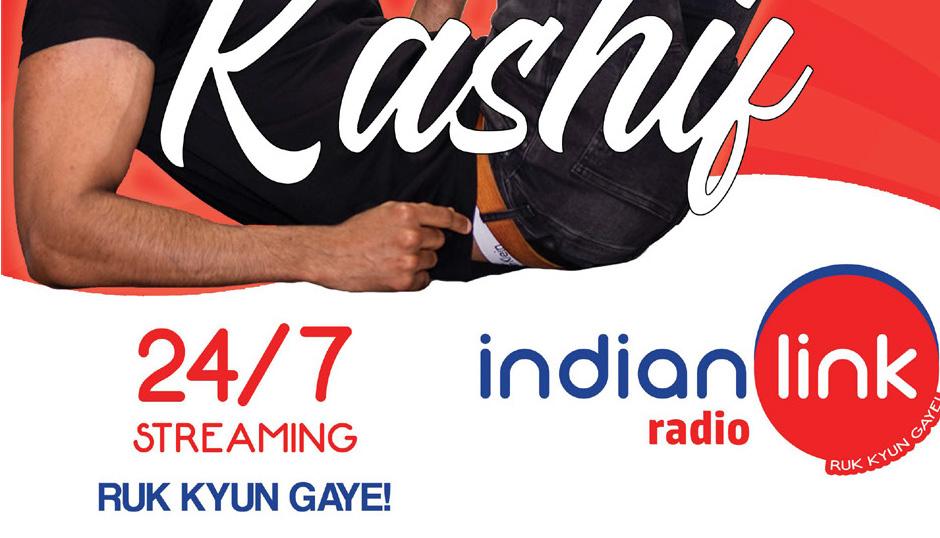
4 NOVEMBER (2) 2019 www.indianlink.com.au
PUBLISHER
Pawan Luthra
EDITOR
Rajni Anand Luthra
SOCIAL MEDIA
Suruchi Sehgal
MELBOURNE COORDINATOR


Preeti Jabbal
CONTRIBUTORS
Krishna Neelamraju, Melissa Domingo Rawat, Sandip Hor, Auntyji
ADVERTISING
Charuta Joshi 02 9279 2004
Indian Link is a fortnightly newspaper published in English. No material, including advertisements designed by Indian Link, may be reproduced in part or in whole without the written consent of the editor. Opinions carried in Indian Link are those of the writers and not necessarily endorsed by Indian Link All correspondence should be addressed to:

INDIAN LINK MEDIA GROUP
Level 24/44 Market St, Sydney 2000
GPO Box 108, Sydney 2001
Ph: 02 9279-2004 Fax: 02 9279-2005

Email: info@indianlink.com.au

Habits for financial success
cards, Apple Pay and financial attractions, are easily ignored and forgotten.
BY PAWAN LUTHRA
Over the next few months, a large number of university graduates will finish their degrees and find their first full time professional job. Likewise, those from TAFE and those entering the work force directly after their HSC will also find themselves in the ranks of the employed. Of course, there are others who may choose to undertake further education or travel or join the ranks of the self-employed, but at some point in their life, they will find themselves looking at that first pay cheque.
There is no better time than this, to set up those habits for financial success.

The 1926 book The Richest Man in Babylon is one of the best books on personal financial advice: the secrets of wealth accumulation are discussed here through a set of parables. That these examples are still applicable is the reason that even about a 100 years later, this book is still available in the stores. The stories and knowledge dispersed are practical and simple, but in today’s world of 24/7 online shopping, credit
Thanks to cheap international flights and the travel bug and those brunch places with the smashed avocados, money is always in short supply.
In fact with the availability of easy finance through home equity loans, redraw, line of credit, credit cards with bells and whistles and pay day lenders, most people find it difficult to not only live within their income but within their credit limits.



Two personal finance habits can mean the difference between financial success and financial failure, especially for the youngsters just starting out.
The first one is rather simple. To secure the long term future of its citizens, the Australian government has mandated an employer to contribute 9.5% of a worker’s salary to superannuation (provident fund, as you probably knew it in India). Great. This is the money which most do not receive directly during their working life but gets squirrelled away in a fund which should grow over time. A new worker, who has never received a pay cheque before, can easily add a small amount before tax to this superannuation fund. So, be it $20 per week or $50 or $100, the trick is to tell your pay roll to do this before tax so that part of this superannuation contribution
becomes your tax savings. The habit here is to add to your long term savings and then allowing the magic of compound interest on your investment to work. For those earning for the first time, having a few dollars less can be built into your lifestyle rather than getting into the habit of spending every last dollar. This habit can be particularly helpful to females, who may need to take time off later in life for family reasons: having passive investment work for you can be a valuable asset.
The second trick is to actually save before you spend. Most people are in the habit of spending and whatever is left over, goes into the savings account. Perhaps, those starting their working career and expecting their first regular pay cheque, can do a rough budget – rent/food/entertainment and other expenses. Then allow the pay to be credited to a high interest account such as UBank or ING and transfer monies budgeted to the everyday spending account. This way there is planned expenditure and yet, money is being saved before it is spent. Over time, monies can be used for travel, or buying your first car, or even as a deposit for your first home.
It’s your money and you are in control. Simple options to grow wealthy – and still have that smashed avo.
NOVEMBER (2) 2019 5 NATIONAL EDITION
EDITORIAL
JULY NATIONAL EDITION St.Lukes 649 846 6637 Brown Bay 649 476 2086 Sylvia Park 649 525 4111 Mid Queen 649 377 5478 New Lynn 649 825 0121 Hamilton 647 834 3293 Wellington 644 589 9582 Parramatta 02 9806 0977 Parramatta 02 9806 0955 Blacktown 02 9831 8033 Liverpool 02 9877 2201 Hurstville 02 9585 2881 Sydney CBD 02 9235 2553 Darling Hbr 02 9211 3021 Brisbane City 07 3220 2881 www.lotusfx.com NeW ZeaLaND BraNCHeS 649 369 1723 Manukau 649 262 2931 Mt.roskill 649 620 4757 Papatoetoe 649 277 4000 Lower Queen 649 365 2280 Pakuranga 649 577 3223 rotorua 647 350 2425 Christchurch 643 343 3357 aUSTraLIaN BraNCHeS FIjI BraNCHeS Suva 679 331 7755 Suva 679 310 0512 Nadi 679 670 2257 Lautoka 679 666 7855 Nausori 679 347 7042 Namaka 679 666 1242 Labasa 679 881 1106 Nasinu 679 339 2007 Ba 679 667 8155 Send Money Overseas most reliably and securely within 10 minutes through moneygram Send Money to any bank account at the best rate and at fee of $15 (No Limits applicable on amounts) Exchange your currency with us, we give the best rates and do not charge any commission Send money to our own branches in all major towns and cities in Fiji and New Zealand Ask us about our commercial business, we do import payments and all international business related remittance at best rate and a at fee of $15.00 only

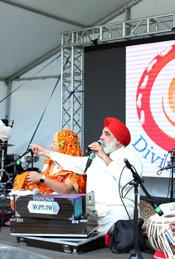





6 NOVEMBER (2) 2019 www.indianlink.com.au 24 30 07 20 SPECIAL FEATURES 07 COMMUNITY OCI card confusion 17 OPINION India’s withdrawal from the RCEP 20 DIWALI Blacktown Diwali lights competition 24 FESTIVAL Sikh Youth Australia’s Divine Steps Festival 28 TRAVEL Gorillas in Rwanda Indian Link hosts William Dalrymple as he talks about his new book The Anarchy 10 COVER STORY CONTENTS VIRDI ENGINEERS ROOF RESTORATION Professional advice at the lowest price Serving the community for over 20 years Lic. No. 114274C Pay in easy interest free installments* *Conditions apply. Limited period only. Contact Harjit today! Call: 0412 254 015 Fax: (02) 9920 1044 web: virdiengineers.com.au Roof restoration Guttering solutions Whirly birds Driveway cleaning & painting Fencing & retaining walls Skylights Sunrooms Leaf guards Carports, decks, patios & pergolas International Migration Centre Contact us for all your Australian Visa needs • Skilled – independent and Australian sponsored visas • Independent and sponsored visas for regional areas • Student visas and graduate skilled visa • Fiancé, partner and other family visa applications • Business skill – Temporary, provisional & permanent visas • Bridging visas • Applications for Review and Appeals Tribunals CONTACT DETAILS Amrit P Jagota (MARN 0532014) Ph 0414 338 423 Manvinder K Josan (MARN 0962796) Ph 0410 719 375 We have moved to new address Suite 2, Level 1, 57 – 59 Dunmore Street Wentworthville NSW 2145 Phone 02 86287336
OCI confusion continues
OCI card holders left scrambling for e-Visas as confusion continues about little-known rules
BY KRISHNA NEELAMRAJU
Several families travelling to India were stranded at airports across Australia and New Zealand, as airlines continue the rigid implementation of little-known rules relating to the Overseas Citizens of India (OCI) card. Families have been shocked and distressed to be told at check-in that minors and older passengers especially would not be allowed to travel.
This development is also causing distress to travellers who already paid for yearend trips to India. Officials at the Indian Consulate insist that these rules have been in force since 2006. They advised travellers to obtain e-Visas if their OCIs are found invalid.
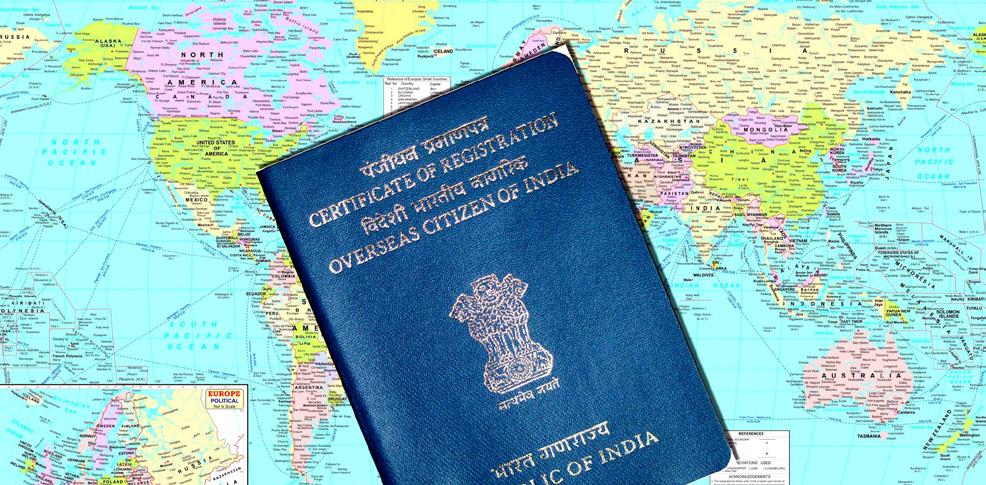
Those who seem most affected are children below 21 and those above 50 who have an OCI card but have had their normal Australian passport renewed recently. Australian passports are renewed every 5 years for those under 18 and then every 10 years. It also seems that it is a bit of a lucky dip at the airline counters with some travellers not experiencing any troubles while others have been turned back.
Indian Link has received multiple frantic calls from community members travelling to India in the near future, after reading social media reports from affected families.
“My family received a rude shock at the airport when they said that our children are ineligible to travel,” Janaki Ranjan* told Indian Link. “Left with no option, my husband travelled alone and I brought the kids back home. I’ve applied for
emergency visa - the only option available to me if I have to be part of a much-awaited family reunion - with an extra spend of $400 per person. I’m also waiting for Malaysia Airlines to call me back with new bookings.”
As hassled travellers like this started speaking out, others with travel plans started worrying about their OCI validity. Frantic calls are being received at Indian consulates, VFS Global and the Indian Link offices for a solution. Worried travellers are also seen venting out on social media and seeking guidance.
Elmira Abreo queried on the CGI Sydney’s Facebook page, “We would not have opted for an OCI if we were advised that every time a passport was renewed we would have to renew the OCI. We would have opted for an e-Visa. We have travelled several times with all the kids' passports and OCI and have never had an issue. Can the consulate please respond?”
On 5 November, Radhika Kumar posted the following to the Indians in Melbourne Facebook page: “We were supposed to travel to India last night but we were not allowed because of my 7-year-old daughter’s OCI card.”
Speaking to Indian Link Ms Kumar stated that the whole OCI experience was “frustrating but both airlines and consulate/VFS people were helpful.” After spending a few stressful hours and $520 for obtaining an emergency visa for their 7-year-old daughter, the family finaly flew out to India on their rescheduled tickets. Their airlines charged no extra cost since the OCI issue ‘wasn’t their fault’. However, not everyone was as lucky as Ms. Kumar.
Sundar Arunachalam posted this on the 20 October: “I am denied boarding tonight because of a rule that was apparently enforced only since last week. I did travel

just 3 months ago with my 2 overseas passports and OCI! This is absolutely frustrating.”
Indian Link spoke to Mr. Chandru Appar, Consul at CGI Sydney, who reiterated that these OCI rules have been in place since 2006, although they were not implemented strictly. The CGI is not aware what triggered the rigid implementation of the rules by the Airlines.
Mr. Appar stated that all OCI cards have the passenger’s passport number listed in the back. If the number doesn’t match with the current passport number, the following rules apply:
1. If the passenger is aged below 21 years, OCI card needs to be renewed every time the passport is renewed
2. If the passenger is aged above 50 years, the OCI card needs to be renewed only once. All subsequent travels could be made even if passport number changes. The passenger needs to carry along their old passport though
3. Passengers aged 21-50 years need not renew OCI card even if passport number changes
These rules were introduced ‘in view of the biological changes in the face of the applicant’ as per a 19 September dated clarification issued by the Ministry of Home Affairs, India. (Were OCI card holders notified of this requirement, though?) Until recently, many OCI card holders were able to travel even if the rules were not met. However, there appears to be a sudden change in implementation that has caught everyone by surprise.
To add to the confusion, an internal airlines memo published by SBS Punjabi insists that all OCI cards must contain current passport number irrespective of the age of the passenger. Mr. Appar assured that the Indian Consulates will
clarify the rules to airlines in this regard, if contacted.
With little time left to navigate these rules, Indian Australian families are being forced to either postpone their travel or scramble to obtain e-Visas at additional cost. There appears to be no possibility of relaxing the rules in the short term.
On the issue of inordinate delays in receiving OCI cards and the long wait times at VFS, Mr. Appar stated that this is a temporary delay which is expected to be resolved shortly. Passengers are also able to obtain VFS appointments 30 days in advance instead of the earlier 15 days, which can help in better planning, Mr. Appar stated.
After speaking to several affected families, Indian Link feels that the arcane rules could have been better publicised and a grace period given before this strict implementation. The lack of reciprocity is also quite stark. With their old Indian passports before OCI, people were able to enter and exit Australia easily on paperless visas. After change in citizenship, and obtaining OCI cards, they are now struggling to navigate the complicated rules, and board the aircraft together. It would augur well for the OCI card system to be quickly digitised for the convenience of the ever-growing and powerful Indian diaspora.
For the cynical, there are even those who are commenting that this seems to be a cash grab by the Indian government. As the buck passes between the CGI and the airlines, it is time we had some clarification.
*Name changed upon request
Issues concerning OCI norms can be addressed to VFS via email: ociinfo.inau@vfshelpline.com
NOVEMBER (2) 2019 7 NATIONAL EDITION
COMMUNITY
YOUR SAY
INDIAN LINK TURNS 25

As we marked 25 years on 24 Oct 2019, many of our readers sent in congratulatory messages.
Thanks to Rosy Lalmalsawmi Khuma, Kalyani Wakhare, Sri Bhargavi Peesapati, Bhupinder Jabbal, Aroop Shukla, Karthik Arasu, Preeti Thadani, Krish Na, Matana Pachuau, Varun Rao, Sachin Wakhare, Hardeep Madan, Helen Kaur, Petra O'Neill, Manisha Belani, Sarita Menon, Chandra Kishore, Gopal Ganwani, Kusum Vera, Gurmeet Kalsi, Wicky Choudhary, Aashish Sharma, Swarnalatha Peesapati, Sandip Hor, Madhvi Pradeep Mohindra, Nimisha Vishal Shah, Sukhnandan Grewal, Ekta Chanana, Rishi Singh, Dolly Somaiya, Ashish Chawla and Mala Mehta.
CONFUSED OVERSEAS INDIAN
KRISHNA NEELAMRAJU wrote online about some OCI card holders left in the lurch following change of rules that were not clearly communicated.
Vasanth Kumar wrote: I wish to advise your newspaper that I have not received a response on this matter yet from the Indian Consulate or anyone else that I have emailed (regarding this issue).
In addition to the advice from the Bureau of Immigration website that the Government of India has decided to dispense with the "U" Visa sticker on the foreign passport of OCI card holders with immediate effect, I have also found various other advice for travellers to India which state that you can apply for e-Visa or Visa on arrival in India! Under those advisory circumstances, I am at a loss to understand why many elderly people were not allowed to board flights in Oct. 2019 as reported by Indian Link. It is also unclear to me what the Law / Rules are in this matter, whether the 'Schemes' that have been incorporated regarding transfer of Visa sticker to new passports, etc, by the Consulate are consistent with the Law / Rules that apply in this matter, and why there are contradictory information on various Indian Government websites. I would have thought these are simple issues but it doesn't appearing to be working in that way.

I am wondering whether I should raise this issue on PM Modi's twitter page/ mail. As an Indian born person, it is embarrassing to me that our bureaucracy can't seem to get simple things right.
Darshak Mehta wrote: Very good article on OCI. Good on you.

@NarendraModi, Indian-origin Australians and New Zealanders being turned back from airports by airlines and prevented from flying to India due to OCI card ambiguities. Unresolved by MEA for three weeks despite reminders. Considerable inconvenience. Please intervene immediately.
MY INSTA
Send us a photo (or Instagram one) of Indian Link in your daily life, and we’ll pick one to present here.
LP Ayer of Thorngate SA wrote: Such beautiful work from the young ones. In my view every one of them is first prize material. Thanks for the Diwali card.

SAY IT AGAIN
WHERE IN INDIA
We asked you to identify this ancient Hindu temple.
A tough one, it only scored one correct answer. Reader Manisha Belani correctly identified it as Mahalasa Narayani Temple (Goa), in the small village of Mardol, just about a kilometre from the famous Mangueshi temple and about 22 km from #Panaji, the capital city.

A huge thanks to the Guru Nanak Gurudwara Turramurra Sikh Temple Sydney for providing meals to our hungry firefighters!! Pictured here are the crews from Hornsby 1 and Hornsby 7 enjoying their meals after bringing the Canoon Road fire under control..
Hornsby Rural Fire Brigade
I’m Virat Kohli. Ivy Mae, Australian cricketer David Warner’s daughter

8 NOVEMBER (2) 2019 www.indianlink.com.au
SRK ON DAVID LETTERMAN

We chose David Letterman’s SRK interview in his Netflix series My Next Guest Needs No Introduction as our pick for the WATCH segment of our current favourites in our column Culture Diaries. Some of you agreed, and some, not quite!
Raj Saneja wrote: I watched it. It is absolutely thrilling. No wonder SRK is King of Bollywood.
Arix Bishnoi wrote: I saw it, but felt that SRK was holding himself back and not being as open as he has been in his previous interviews. In general SRK is bold in his speech yet inspiring, but in this show he was very conscious with his words and actions. All in all I’ll give it 4/10. If you are an SRK fan like me you should watch it, but don’t get your hopes high.
WHO WORE IT BETTER?
CAPTION CONTEST
What’s Kareena Kapoor Khan saying here?



Raj Saneja wrote: Mind you, I am not going to run in my sari. I will only hit 4s and 6s.
Deeksha Chopra wrote: I'm just married to a cricketer’s son... ask Saif to hit it out for a six!!
Rum Jum wrote: What’s your problem, ha? So, I married Saif...
Arix Bishnoi wrote: What! Unbranded bat??
Meenu Mehra wrote: Don’t underestimate the bahu of Pataudi Khan!
Pamela Mirza wrote: So what, I may not be able to play cricket, but I do belong to a cricketer's family.
Sudhir Juneja wrote: What do you want me to do with this thing?
Amit Patnia wrote: I’m a celebrity, get me outta here!

Krishna Sri wrote: Why are you bowling underarm to me, is this how you play cricket down under?
Kunal Anil Sharma wrote: What the hell do I know about cricket?
Mona Shekhar wrote: Hey I am Patuadi's daughter-in- law.... I can bat too!!
Surjeet Kitty Kaur wrote: Who has the balls??
Leigh Kostiainenwrote: Come on! Can’t you take a joke?
Sudha Nadig wrote: Should I hold the bat or sari ?
Saba Nabi wrote: Where is the ball - waiting to deliver my winning shot
Sa Ne wrote: I have no idea about cricket. I'm just posing!
Harsh Bhatt wrote: This was a trial ball! I am NOT OUT!
Anubhav Dhingra wrote: I’m sure that shot went for a 6. Umpire, what do you mean it’s out?!
Raghu Rules wrote: Why am I here? What am I doing??
Vinutha Reddy wrote: You call this bowling.... is this all you got for me?
Arora Vijay wrote: Come on, bring me a helmet, guys.

Rishi Singh and Jeannie Allen wrote: Howzat!?!
Rahul Sharma wrote: And where’s the goal post?
Ruchir Garg wrote: Ye wide ball thi!!! Dobara daal...
Vandana D'souza wrote: Sari mein cricket khelna mere dayein haath ka khel hai!
Dear @duttsanjay Ji: Historically, Indian cinema has been extremely instrumental in strengthening the Indo-Afghan ties. I very much hope that the film Panipat has kept that fact in mind while dealing with this important episode of our shared history! Dr Shaida Abdali, former Afghan Ambassador to India
NOVEMBER (2) 2019 9 NATIONAL EDITION
Om bhur bhuvah svah tat savitor varenyam bhargo devas yadhimahi dhiyo yo nah prachodayat Noah Centineo, American actor
SONAKSHI SINHA OR BEYONCE IN YOUSEF AL-JASMI? Sonakshi Sinha 61% Beyonce 39%
The Company you keep
PAWAN LUTHRA in conversation with author and historian WILLIAM DALRYMPLE
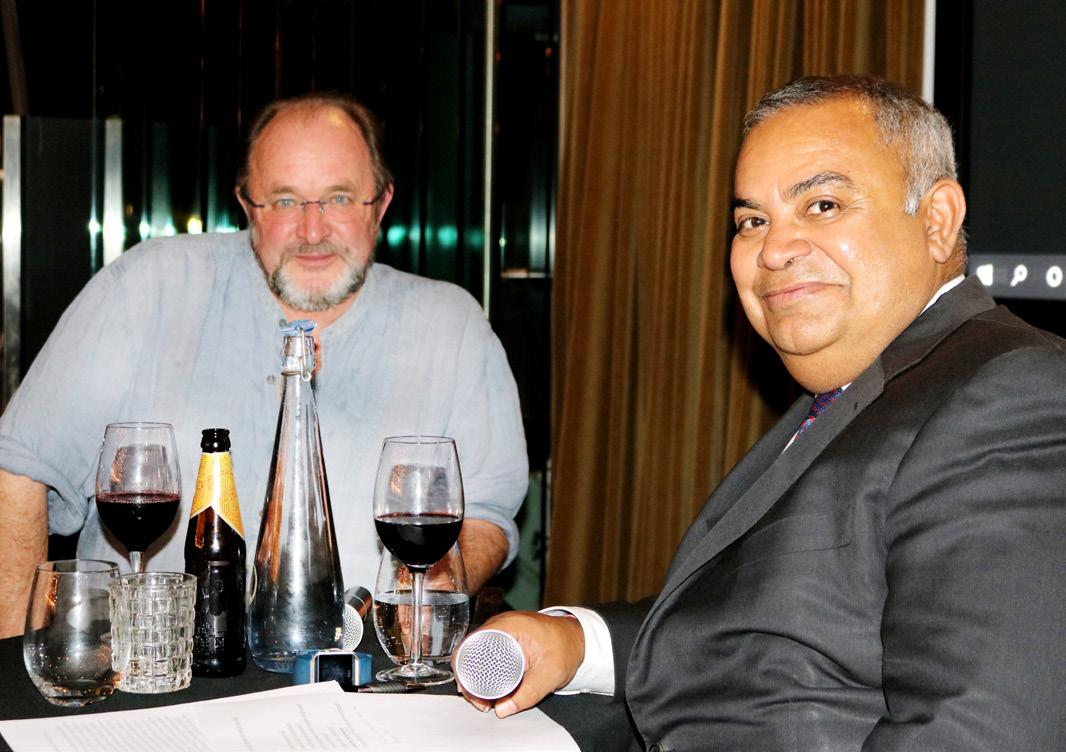
Pawan Luthra (PL): William Dalrymple, you have a very special ability to take us back into the India of the 15th, 16th, 17th, 18th and 19th centuries. You transport us to the darbars of the great Mughal kings, and one can almost smell the horses of the British garrisons. Your latest book, The Anarchy has just hit the stores and is on the best sellers list everywhere. It sits at the middle of the end of the great period of the Mughal Empire and the start of the Raj. What compelled you to write about this period?
William Dalrymple (WD): Everyone in India knows about the great Mughals, about Shah Jahan and the Taj Mahal. Everyone knows about Lord Curzon and the Raj and Queen Victoria and all that stuff. But in between those periods, you have this extraordinary world which breaks all our expectations. It's a world where it isn't the British Empire which is running India, but one multinational corporation, the first multinational corporation, the East India Company. It was not initially in any way involved with the government for the first 170 years, from about sixteen hundred through to 1770. It was, you know, a completely libertarian, ruthless capitalist organisation which performed the hugely improbable feat of taking over the richest empire in the world. And when it started, in the year 1599, just to give you the

context of this, Britain was producing about 3 percent of world GDP. And at that period, the Mughal Empire was producing about 37.6% of world GDP. In other words, well over a third of world GDP. And for the first time in history, India, by which I mean most of modern India, Bangladesh, Pakistan and most of Afghanistan, which was what made up the Mughal Empire, had overtaken China as the world's leading industrial producer. I think today in India, there's a tendency to see the Mughals as these effete kings building ridiculously expensive tombs and prancing around in Bollywood outfits. In actual fact,
from the point of view of economic history, they were the most successful Indian dynasty of all. And in the early 18th century, just when politically the Mughal Empire was in a sense beginning to fracture, their economic power was at its peak, largely due to the textile industry in Bengal. By Bengal I mean Greater Bengal, which embraces modern Bangladesh, Orissa and Bihar. That area was the world's manufacturing hub of textiles in the 18th century, the same way that Manchester became a century later. A million weavers at work, producing not just incredibly high quality and cheap and competitive cotton, but
chintzes, kalamkaris, fine silks with weave so fine they were called bafthawa - woven air. This incredibly competitive and remarkable industrial produce conquered not just Europe - every Frenchman, every Dutchman wanted a kalamkari hanging around his bed - but also as further afield as Mexico. The East India Company initially rises up as basically the shippers of this material around the world. And they are parasitic or symbiotic with the rise of Mughal industrial power. So this was a period when India was unbelievably wealthy. Millions of pounds in weight of British and European gold and silver is pouring in not just from Britain, but from Portugal, Holland and Denmark. It seems right up until the middle 18th century that this is a loss of gold bullion to Europe and a gain to India that is irreversible.
This has been something which has been the case in Indian history since the time of Pliny in the first century, very austere Roman writer, contemporary with Jesus and Augustus, who complains that such is the decadence of Roman womanhood, that all they want to do is wrap themselves in gorgeous silks, rub their bodies with sandalwood paste from India and to hang from their ears Indian diamonds.
The idea that we are now seeing ahead of us of India as this big industrial growing power with an incredible future, is not
10 NOVEMBER (2) 2019 www.indianlink.com.au COVER STORY
For video footage of this interview, head to www.indianlink.com.au
Photos: Rinto Antony
something new and odd and surprising; it’s just a reversal to what has always been the case and only stopped being the case due to European firepower. And this very brief period between Vasco de Gama in the 1490s and 1947 - 500 years - is breaking what has otherwise been 3,000 years of economic dominance by China and India.
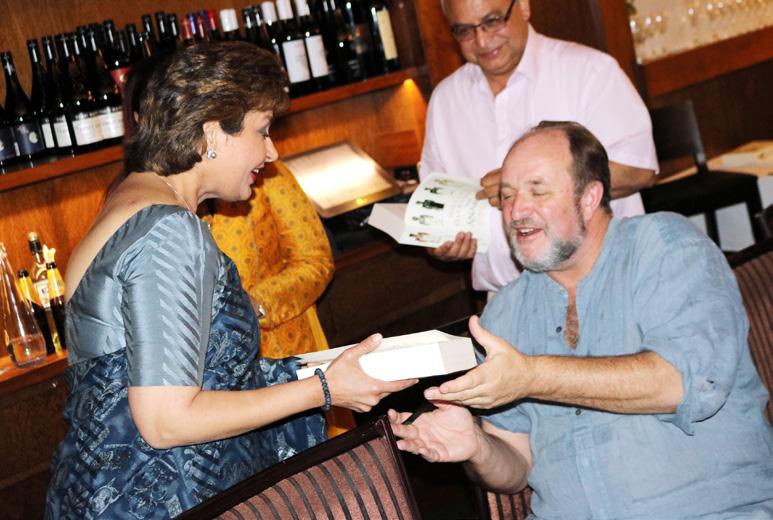
PL: William, tell us more about the East India Company in 1599. Paint us a picture about how it came into being, and how over a period of time the aims of this private company changed.
WD: In 1599, Shakespeare's writing Hamlet somewhere just downriver from the Globe Theatre. At the same time, we had a classic Tudor entrepreneur called Customer Smythe. Customer, because he'd been for the last ten years in charge of the London Customs and made a fortune out of that. He then made another fortune by founding something called the Levant Company, a group of 30 very rich merchants and ship-owners who pooled their capital and started buying spices from Aleppo, Cairo and Venice. And they did very well for about 10 - 15 years. And then in 1595-96, their whole business model was put to nothing by the fact that the Dutch realised that you can just sail round the cape and go to what we would now call Indonesia, particularly the Island of Run, and buy all the stuff at a fraction of the price, cutting out the Arab middlemen. And so Smythe appeals to the patriotic spirit of the businessmen of Elizabethan London, and calls upon them to try out a new business model that had only been tried out three times before. It’s something that's very obvious to us today and probably affects almost everyone in this room in one way or another, but which was a new invention at the time. This is the joint stock company, the corporation. The difference between the joint stock corporation and the guild system by which he had run the Levant Company, was that rather than a closed board of 35 investors, all of whom were involved in the running of the company, in a joint stock company, you have a small board, you keep the investment completely separate and anyone can invest. So as well as the big ship owners putting in a thousand pounds, five hundred pounds and so on, you have small London businessmen who contributed five pounds, 10 pounds, 15 pounds. And they didn't expect to be consulted about whether a voyage will take place or not. They just knew that they will get a share of the profits if it's successful. And this is a new invention. Today we take a corporation, the joint stock model, for granted, but this was a new invention of this period. They set sail to Indonesia. It doesn't initially look like it is going to be a great success because they've just got as far as Dover when the wind dies down and there's this strange summer calm and the expedition just sits bobbing off the White Cliffs for a month and everyone comes and laughs at them. They eventualy make it to the Island of Run, and there they see a Portuguese ship coming in the opposite direction. As they're all ex pirates, they just board the Portuguese ship, transfer the contents into their hold, and sail back to London, where they sell the contents for one million pounds. And that's enough to make all their fortunes. It does literally begin as an entirely piratical exercise, they make no bones about this. A lot of the seamen who had invested and who actually staffed these ships had been with Drake and Raleigh, Pirates of the Caribbean, think Jack Sparrow, it's this sort of world. Initially,
they are always one step behind the Dutch. The Dutch have already been there. They've got better financial instruments. They can raise more money, they've got bigger ships. And in 1630, they actually beat the English out of the East Indies, which means Java, Indonesia. There's this famous face-saving treaty whereby the English handover to the Dutch, the Island of Run, which is then considered to be the most valuable property in the world, where all the nutmeg comes from. And as a face-saving device, the British get given a muddy island in the Hudson River called Manhattan, which, of course, isn't a bad investment in the long run. But at the time, it's considered rather a humiliation and by default, the English fallback on the textile trade, the second best option.
And that turns out to be their lucky break, because this is just the moment when the Mughals are rising up, with the same eye for aesthetic beauty which informs the Taj Mahal and those incredible textiles that we see in the miniatures. Their work genuinely changes the nature of textile design, and makes these textiles incredibly beautiful objects that everyone in any culture, whether Mexican, Frenchman, Dutchman, Chinaman or in the East Indies, wants to buy. And the East India Company rises up, on the back of the Mughal Empire. It's only in the 1750s that the whole thing changes gear and turns from an empire
of business, into the business of empire.
PL: What did they do?
WD: The Company for its first 150 years is just a trading company. Because the Mughals are not particularly interested for some reason in exporting their goods, the Company steps in and acts as the shipping agent. It does very well. It beats local competition because it has better ships and it sells this stuff around the world. Then in the 1750s two things happen that change the nature of everything. The first is that the Mughal Empire has disintegrated. It reaches its peak under Aurangzeb, who dies in 1787. Shortly after that, the Persian emperor Nadir Shah, comes down from Persia. He defeats the Mughals at the Battle of Karnal, captures their Emperor Mohammed Shah Rangeela, marches him into Delhi, and six weeks later, leaves with 8,000 wagons filled with jewels, gold and silver, everything, in a single looting expedition back to modern Afghanistan. He takes the Peacock Throne in which is embedded the Koh-i-noor. He takes the Daria-i-noor, the other great Mughal diamond, which is now in the Kremlin in the sceptre of Catherine the Great. All this stuff just debauches off to the Hindu Kush. It's as if you just poured a fire extinguisher into the local boiler. For an art historian, this is one of the most wonderful periods of Indian culture. For literature, for painting, for music,
for Indian dance, this is one of the most dramatically prolific and culturally fascinating periods of Indian history. But politically, it means that the Mughal Empire, which was this unstoppable force of four million men under arms, has now fragmented into lots of little kingdoms. And not just the British or the English East India Company, but the French companies, between the two of them, begin hoovering up these little tiny states, which are culturally and economically very rich, but which are militarily and politically vulnerable. The French show the way in 1740: they are the first to train up seepoys, local Indian soldiers, in the latest military technology from Europe.
Europe has just fought two big wars - the war of the Austrian Succession and the war of the Spanish Succession - and Frederick the Great of Prussia who's a military genius, has transformed warfare with simple little changes to the nature of the cannon. He puts an elevating screw on the back of a cannon. He makes them portable so horses can move them around battlefields. He invents a form of musket that has a bayonet and which can be rapidly loaded and fired in file firing - one line kneel down and fire as the next lot load, than that lot fire, so that you get continual firing by infantry.
These techniques, none of which are rocket science, are quite easily copied, and are brought to India by the French and they train up local guys to do it. And it's incredibly effective. The first time it's tried out is in 1740, at the Battle of Adyar, which is now southern Chennai. 70 French company seepoys see off 3,000 Carnatic cavalry. From that point, for about 30 years, the English and the French realise they can more or less see off any army with this new military technology. The English company then tries this out in Bengal with Siraj-Ud-Daula at the Battle of Plassey, then again at the Battle of Buxar in 1764.
To everyone's amazement, most of all to the Company's amazement, they haven't planned this particularly. They found that using this new military technology, they are in a position to just take over north India. This incredibly rich, incredibly civilized, but now vulnerable, fractured and disunited kingdom is simply conquered in as little as 50 years. And how they do it is astonishingly audacious. They train up local Indian warriors to use this

NOVEMBER (2) 2019 11 NATIONAL EDITION
new technology. The Company seepoys grow from 20,000 at the time of Clive to 50,000 by the time of the Battle of Buxar, and only forty years later in 1799, to 200,000 seepoys. Which is literally double the size of the British Army. The British Army, which is barely involved in India at this point, is only 100,000 men and is now engaged in the struggle with Napoleon. But the Company which only has thirty five people in its head office, and in Bengal never has, even as its peak, more than 2000 white guys sitting in Bengal, train up 200,000 Indians to fight other Indians.
To do this, they borrow money from Marwari and Hindu bankers.

If you wrote this as a novel or a film script, you'd be laughed off because it's the most improbable story.
Why would anyone fight their own brothers and sisters? Why would anyone lend money to a voracious corporation that was involved in something so violent? Well, the answer is, the soldiers got paid twice the salary of any other military unit in the country.
And why would the Marwari traders and the Hindu bankers of Benares, Allahabad and Patna lend money to the Company? The answer is in that case, that it may have been foreign as in it was Christian, meat eating, white skinned, from Europe, but as far as the Marwari money lenders were concerned, they were both financiers, they spoke the same financial language, they understood about repaying loans on time with interest, they had civil courts where business contracts could be defended and upheld.
Calcutta initially was like Dubai or Singapore today. It was a tax haven where you could escape tax you had to pay elsewhere. You could grow and cultivate fortunes, which is what the Marwaris were doing. The Marwaris, originally from Marwar in Jodhpur, went to Calcutta for the same reasons people go to Dubai and Singapore today. They didn't have to pay tax. Simple as that.
The Company is quite ingenious in realising that and playing on that. So the next thing it does in the 1790s, is it begins to break up the old Mughal estates, huge areas of land, and puts them up for auction. Who buys this stuff? The new rising Hindu middle class families like the Tagores, the Debs, the Mullicks. And by buying into this world, they become part of it. They get subsumed into this Company world and they make the decision, rightly or wrongly,
that the Company which may loot assets, strip, plunder and be incredibly violent to its enemies, is for them the least worst option financially, that their capital is safe with it, and that they prefer it to the Mughals or to the Marathas. The Marathas raided Bengal in the 1740, looted, raped and pillaged. So they're not going to go with those guys. So they make this decision. And Bengal, as this industrial hub, has the resources: it paid for the Mughal Empire first and then it paid for the Company. It generates enough revenue that when Indian armies catch up militarily with the Company by the 1780s, Tipu Sultan, Haidar Ali and the Marathas have all trained up armies in the same techniques and can beat the Company on the battlefield. But it still prevails because it has more resources. It's a horrifying story from a variety of fronts. Think Avatar - the movie where, you know, the mining company goes and takes over another planet. It's the same sort of story. It's a very canny, ruthless corporation that manages by military force and by financial inducement.
PL: How did it exploit Bengal in the famine of 1770?

WD: So the company screws up, as corporations often do, through greed. We've seen in our old days many examples of corporations which seem impregnably strong, impregnably dominant economically and whose share price seems immovable, suddenly collapse when circumstances change. And this happens to the company in 1770. 1764, it's finally conquered all of North
India with the Battle of Buxar: it takes them only six years to asset strip, loot and plunder Bengal so thoroughly that when the famine of 1770 comes, there are no surpluses. There are no granaries stocked with grain. The Company is not in the business of setting up soup kitchens; as a company it’s there unequivocally to make a profit in the same way that Goldman Sachs is there to make a profit today. So when the famine comes, the Nawab of Awadh at the same time builds imambaras and employs 100,000 people. And they live. In Bengal instead, one million Bengalis die, a fifth of the population of Bengal. The Company - by sending seepoys out into the villages and gathering tax revenue by force, and hanging anybody who doesn't pay - manages to maintain revenues at pre-famine levels. The shareholders in London vote themselves an increased dividend from 10 percent to 12.5 percent. This happens for two years. Then finally, in the third year, there's nothing left. As one Scots writer and whistleblower writes, ‘They have picked the Bengal bones to the marrow and it lies bleaching in the wind.’ The share price sinks, 30 banks collapse across Europe. It's like the subprime, but only worse. And this is the moment that for the first time in its history, the government begins to take an interest in the East India Company. Up to now, they've been a valuable source of customs revenue, and no one has asked too many questions about where this money is coming from. It provides a third of British customs and it pays its taxes and
the government's fine with it. Suddenly, whistleblowers are writing reports of a million bodies in the streets of Calcutta, the Ganges clogged with corpses, vultures and dogs barking at human remains, clouds of flies and vultures like some biblical plague. And suddenly everyone in Britain wakes up to the fact that all this stuff is going on and there is outrage. There are angry editorials in the newspapers. Parliament has to bail out the Company because it is literally too big to fail.
So the Company in 1774, through its own greed, puts itself in a position where it isbailed out by the government. So the government now has a regulating role over it. And from that point onwards, it changes from this buccaneer libertarian organisation, unregulated, unwatched over, just a source of money, towhat would today be called a public-private partnership. Eventually in 1857, it screws up a second time during the Great Indian Uprising, and three hundred thousand are killed in the reprisals. And as India is nearly lost to Great Britain, the government rolls up the Company completely and in our terms, is nationalised.
PL: Why did the British government support the East India Company?
WD: Up to 1774, Parliament has been very thrilled with the company because it's a very safe investment. A quarter of Parliamentarians have shares in the East India Company growing to, I think, 40 percent by 1770. The only resentment felt against the Company is not about the plunder and immorality of its actions in India, it's more to do with the fact that people are jealous of these Nabobs coming back. These men are coming back aged 35, buying up parliamentary seats, buying up big country houses around Britain. There is social resentment against these young men, swaggering, throwing money around, breaking social convention. They are often from fairly humble backgrounds, but now they're the new rich. So the initial opposition to the Company is more social and snobbery than outrage about human rights or anything else. By 1770, there is genuine outrage at everything. The Company is bankrupt and yet at the same time, the dividends have never been higher in terms of the amount of money being remitted from India to Britain. I think the same year that a million Bengalis die, 1772, 15 million pounds is remitted back, in that day's currency. So what had been seen to be a very good thing for Britain, had been the country's leading employer, had been the largest payer of tax and customs revenue, suddenly came to be seen as this monstrous, violent force that was somehow involving the country in war crimes and murdering. Horace Walpole (writer, historian and politician) writes in his diary, “This time, we have outdone the Spanish and the Portuguese in Mexico. They at least had the excuse of faith. We have done this for profit.”
So suddenly the country wakes up to what's going on. And by 1857, the whole thing is nationalised and becomes the Raj.
There's two very different periods of history when you're dealing with the British in India. One, that has remained in the public eye: it is Kipling, Queen Victoria, Merchant Ivory films, smiling Maharajas, all that stuff. But that period is only 1858 to 1947, only 90 years.
A bit below the waterline, which we rarely see if ever in movies, is the Company period. In Indian popular culture, there's Satyajit Ray, The Chess Players (Shatranj Ke Khilari)
12 NOVEMBER (2) 2019 www.indianlink.com.au
COVER STORY
and Junoon about this period.
There are different pros and cons. The Company period is more exploitative, asset stripping, more plunder, more loot, and yet at the same time it's more collaborative. The Company intermarries - a third of British men in India marry Indian women. Most Indian most company businessmen will have Indian partners, whether it's in the indigo trade or the opium trade. (A lot of the opium trade is in the hands of Parsis out of Bombay, for example. I was actually in the headquarters of Jardine Matheson in Hong Kong giving this talk two nights ago, Jardine Matheson being the private company which in a sense replaced the Company in the eighteen sixties as the centre of the opium trade. At the top of the stairs in the penthouse where I was giving this talk, is this huge, massive portrait of Jamshedji Jeejibhoy, who is the JJ of the JJ School of Art and the JJ Hospitals, and this whole variety of philanthropic organisations. That money came from the opium trade.)
The Raj, which follows it, post 1857, is slightly different in that it has all this rhetoric about bringing Western civilisation to Asia, rescuing the poor benighted natives from Hinduism and all the things that Victorians disapprove of. And they are very racist. They have the all-White clubs, ‘No dogs and Indians allowed’ etc. That's the way of the Raj. And yet in order to back up their rhetoric of civilisational mission, they build hospitals, universities, communications. So in 1947, when Britain leaves India with only 7 percent of world GDP rather than 43 percent or whatever it was at the peak, it nonetheless leaves India with the best communications in Asia. The best education system in Asia. And the best health system in Asia. And for the first 20 years of Indian independence, if you're in Singapore, Malaysia, you will send your kids to Delhi to be educated. It's only with the rise of South-East Asia in the ‘60s and ‘70s that that ceases.
You know, I don't know which is worse or better. You don’t particularly want to be an Indian under either, but they are different in their iniquities. The collaborative plunder of the Company or the racist civilisation mission of the Raj. But what is certainly the case is that we remember the Raj. We've forgotten this period when India most improbably was conquered by a single London business.
PL: You mention the Marwaris - or the JagatSeths as the Mughals called them, the Rothschilds of India as you call them. You claim that they lent the Company money to take over India and exploit the Indians themselves. How has contemporary India reacted to this statement of yours?
WD: Well, I don't think the Marwaris would have seen it like that. They would not have seen themselves as funding the expansion. The first thing the Jagat Seths do is actually pay Clive to topple Siraj-Ud-Daula. It's a palace coup that they're paying them for and they don't calculate on the Company then being the puppet masters. But the Hindu bankers continue to fund the Company because they see it as the safest place for their capital. It's that simple. They're businessmen. They have to make a judgment on which is the most profitable. Who is going to repay their loans? The answer is the Company will appeal. Business is pure business. They see it as they do today. For the Company ultimately, its initial success is due to military superiority. Its final success is due to two things. One, it has Bengal with all its revenues, and two, the bankers back it rather than (other forces at

the time). It's that simple.
PL: The book ends when the Company ends. Of course there was murmur in the British Parliament since the early 1800s about the dangers of allowing a trading company - one that the British government had so little control over - to rule over 100 million people. It caused rampant corruption, seeing a small group of men make an obscene amount of money. In 1833 the British Parliament passed a Bill removing the Company’s power, but it was so strong that it wasn’t until the 1870s that it finally died a quiet death, Queen Victoria taking over as ruler of India. Yet, your last sentence is quite chilling. You write, “Four hundred and twenty years after its founding, the story of the East India Company has never been more current.” What are the contemporary ramifications of the East India Company?
WD: There are really two stories in this book. One is about Company’s conquest of India, which is a historical story. The other story, sort of a meta story in itself that runs all the way through the book, is the story of the power of corporations versus the power of the state. And that, of course, is a story with an unfinished conclusion. It's a contemporary story. I've just come back from a book tour in the States. Elizabeth Warren is bringing up these issues about the power of big pharma, big data, big money. The story of the Company is the story of the institution which first invented so many of
the things we associate with corporations today. Corporate lobbying is invented by the Company, which is also the first company to really be multinational and to straddle the globe. It's the first company which realises that a rich company can actually change foreign policy and that if you influence parliament, the interests of your shareholders consume and become the interests of the state. Every modern democratic nation of the world has some stories of this being the case in the 20th century. There were three famous moments when corporations brought down governments. 1953, Anglo Persian Oil Company gets rid of Prime Minister Mossadegh of Iran, the only freely, democratically elected Iranian premier. The first thing he wants to do when he comes to power is to nationalise the oil industry: the CIA and MI6 topple him and replace him with the Shah. 1955, Guatemala, the United Fruit Company owns 42 percent of the cultural land:asocialist government is elected which promises to redistribute land more evenly to the people of Guatemala. The government is toppled by the CIA, producing the phrase Banana Republic. 1973, Salvador Allende in Chile is brought down by the CIA. (Following this, we see) the most brutal human rights abuses in South American history. So you don't have to be a, you know, vegan, anti globalisation, bandana-wearing nutcase to recognise that corporations do do this sort of thing. It's part of history. Corporations can bring down governments. They can skew foreign policy. They can
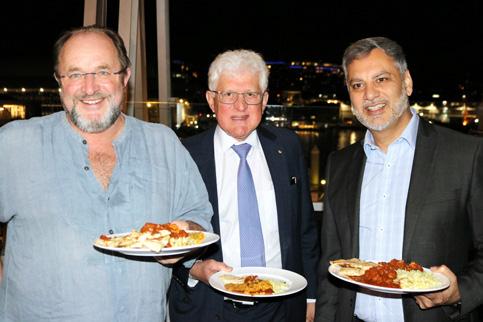
change the way governments operate. And the Company not only is the first to invent corporate lobbying butto realise that the 40 percent of employees in parliament who own shares can be used to influence foreign policy in its favour. They also realise that you can bribe parliamentarians. So in 1697, for the first time in world history, the East India Company is caught bribing members of Parliament with share options if they vote to extend its monopoly. Now this obviously is something which continues in the shadows in every democracy in the world. Corporate donations in any country outbid private donations, and they come with some sort of quid pro quo which is never made public, whether it's Adani or Advani or Ambani. The most obvious question in modern history was, given the closeness of Dick Cheney to Exxon, was it an accident that it was Iraq that was invaded after 9/11, when Iraq clearly had nothing to do with 9/11? So the way that foreign policy can be changed by a big corporation has its roots in the history of this company. We're not just talking a story, a specific historical story of the conquest of India. This book is about the origins of corporate lobbying, corporate influence and the ongoing and unfinished story of how far corporations can change the world.
Darshak Mehta (questioner from the audience): What do you think the Indians should have done to resist, with the benefit of your hindsight? Were they too acquiescent? Were they too gentle? Were they too stupid? Were they too greedy to make money? What should they have done differently?
WD: Indians have never been stupid and they've never been gentle. The story of this period is full of incredibly violent, clever, ruthless people. The Company doesn't even begin to make a toehold in India until the Mughal Empire breaks up. So the answer to that question is disunity. The great problem with India at this period, several Indians realise this, is the disunity. I mean, there are brilliant Indians in the story. There are Indian military geniuses, financial geniuses, but they don't get their act together in a united front. And to say one last thing, which I haven't said, if you were to look for one positive thing from the Company, what it does do and what in a sense is its greatest legacy, ironically, is it unites India, and it creates a
NOVEMBER (2) 2019 13 NATIONAL EDITION
united Indian army. While India has been a geographical, cultural, spiritual space for millennia, it is never until this period a united political space. Not with Ashoka, not with the Guptas, not with the Delhi Sultans, not with the Cholas, not with the Mughals. It's the Company that first unites this area. And the army it founds is still the basis of the modern Indian army. Regiments like Skinners Horse and Gardeners Horse still exist to this day; the officer's mess is filled with cups and trophies and pictures of this period. And so if you were to look for one bright outcome from this, far from an elevating story of loot and plunder, it is that, ironically, India becomes united politically for the first time through this horrible process.
Teddy Mehta (questioner from the audience): William, I'll drag you into the current age. You wrote once about the shrinking of the British Empire. Is Brexit the last chapter of the shrinkage? Do you think Empire is finished?
WD: Long finished, obviously. I mean, what's finished probably in the last three years, is the United Kingdom. I'm Scottish. I voted for the union when we had the last Scottish referendum.
If we have a Brexit England, which is antiEurope, insular, belligerent and ignorant, it's not just the Scots who are going to vote themselves out. It's the Irish and the Welsh, too. And people forget the Britain is very recent concept, 1707. I would imagine at the moment that we'll see the break-up of the United Kingdom within the next decade and that Scotland will probably remain in Europe. I certainly hope to have a European passport again before too long.
Rosemary Mula (questioner from the audience): William, you've obviously done a lot of research going back so far. Did you find a consistent record of what happened then? How did you sift through it to come to the conclusions that you have?
WD: There are two very different problems here. You have the Company which keeps every single chit for 300 years – it’s said there are 35 miles of Company records just in the British Library alone and an equivalent amount in Delhi in the National
Archives. And then, you know, to get the other side of the story, you need to get the Mughal records. These are far more complex and difficult to access because they’re in Persian, only very latterly in Urdu. And they are split up, some in the National Archives, some in British Library, but quite often in small provincial archives in places like Patna, Tonk in Rajasthan, Rumpur in Utter Pradesh. Getting hold of that stuff is the main challenge. That's where I devoted my primary research, to fill out that picture.
PL: What took you to India in the first place?
WD: Total accident. Actually, I wanted to be an archeologist in Iraq. I had a place in the British School of Archaeology in Baghdad, and it got closed down by Saddam Hussein, who claimed it was a nest of British spies, which it probably was for all I know, I never got there. So I ended up going with a friend to India in 1984. I'm still there.
PL: What fascinates you about India?
WD: You could have asked me that question at any point in my life. And I’d probably give completely different answers. It's allowed me to do a whole variety of different careers. I've been at different times a foreign correspondent, a historian, a travel writer, festival organiser, a photographer. It’s like I'm like a child in a sweet shop there. And it's such a rich place to write about, to photograph, to think about, to know about.
PL: What frustrates you about India?
WD: Oh, so much. Whatever love I have for the country is equally matched by the daily frustrations, like when the bijli goes or the Internet disappears for five days in a row, or you're stuck in a traffic jam for seven hours… The frustrations drive me up the wall, but I’m enjoying everything else enough to put up with the frustrations
PL: With all your research from the 15th to the 19th centuries and beyond, which character, living or dead, do you identify with the most?
WD: I think I would very much enjoy being one of those White Mughals…Sir David Ochterlony with 25 wives would be quite a
good start (laughs). Each of his wives had an elephant and they would do this wonderful march around the Red Fort every evening. Then they’d return to his library, with Ochterlony in his Fab India sort of kurta pyjama, turban on his head, dancing girls in front and a eunuch behind. And best of all, the outraged Scottish ancestors staring down from the picture rail above, wondering what's happened to Davy after a few years in the Indian salon… And well they might ask!
PL: There are deep links between your family - and that of your wife Olivia Fraser - and India.

WD: Both of us are from the same sort of class of Scotsmen who always had social aspirations greater than our wallets, shall we say. And so both families intertwined with India. Throughout this period, there are three Dalrymples in The Anarchy, one of whom is linked to this continent very closely.
Alexander Dalrymple was an East India cartographer, who mapped the whole west coast of India and then planned a settlement which ultimately became Singapore and then wrote a book called The Great Southern Continent. He became convinced that what Tasman had seen on one side and various other French sailors and Spanish sailors, must be a continent in the southern ocean –Australis as they called it. He came back from the East India Company in 1767, went to the Royal Society, and managed to get money to go and find this continent that he was sure existed in the South Seas. But he was East India Company, not Royal Navy. At the very last minute he discovered that he wasn't going to have complete command of this expedition because it was a Navy ship. So he resigned, and some character called James Cook went and led the charge, for which you would all be learning to spell Dalrymple!
PL: Last question: do you have a comment to make on contemporary India?
WD: I'm a great optimist in terms of economics. It seems to me that everything has to go wrong in order to stop India becoming the next great economy. Wherever they go in the world, Indians succeed there. As soon as they’re let out of India, they will rise to the top. We now currently have Sajjid Javid and
Preeti Patel as our home minister and foreign minister in Britain. And this has happened in a generation. In Canada a Sikh is now the deputy prime minister under Trudeau. The people of India are hardworking. They have incredible resources. And India will be the second economic power in the world, I'm quite sure, by the time I die.
I'm not a fan of this government, though. What's happening in Kashmir will undermine India, is my personal view. I think there are some very dangerous things going on with the Indian press and the silencing of the opposition and the absence, frankly, of an opposition. That's not Modi's fault, the fact that the Congress Party has disintegrated. Currently, I think it's very worrying. I hope that out of this, a new opposition will emerge, giving India the two-party system it needs. But despite all that, I cannot see a future where India cannot succeed. I think its success is assured unless something terrible happens. My big fear is that by focussing so much belligerence on Pakistan, by all this action in Assam, disenfranchising a million Assamese Muslims, the whole action in Kashmir and so on, India will forget the far greater threat that China poses. China at the moment is much richer, much more economically and militarily advanced than India. My fear is that we'll see another 1962 and that Modi could suffer, ironically, the fate of his least favourite politician Nehru. Yet India remains amazingly blind to the threat that China poses to it, by focussing all its anger on Pakistan, which is a very minor player in the world stage. There were points in the first decade of the century when the Indian economy was growing every year by the size of the Pakistani economy. It's that level of disproportion. I think India needs to refocus its anxieties much more on China and the String of Pearls, the deep water ports and Trincomalee and Gwadar and elsewhere, because I think China is the force that India will ultimately have to reckon with in the next 20 or 30 years. It's the relationship of these two powers that will determine the future of this planet.
PL: And that's a historian speaking, who can draw on his research and experience. Thank you for your time with us, William.
14 NOVEMBER (2) 2019 www.indianlink.com.au
COVER STORY



NOVEMBER (2) 2019 15 NATIONAL EDITION Himalaya Spice Centre Your one-stop spice shop 1 Station Street Thornleigh, NSW • 9481 8200 ‘You name it, we have it’ Himalaya Spice Centre www.marsdens.net.au CAMDEN CAMPBELLTOWN LIVERPOOL ORAN PARK SYDNEY 4677 7121 4626 5077 9601 5666 4601 1811 9233 1133 • Property Law • Family Law • Estate Planning • Business Law • Criminal Law • Personal Injury Law Experience matters, don’t settle for less! WANT TO WRITE FOR INDIAN LINK? We're on the lookout for freelance contributors. We want people who are great with deadlines and have a passion for all things Indian in Australia. Email your CV with a cover letter telling us a bit about yourself, along with two examples of your most current work to media@indianlink.com.au
WHAT’S ON
FESTIVAL
Diwali Fair in the City of Ryde
Sat 16 Nov (12:30pm - 8:00pm)
Ryde Indian Association invites you to a fun-filled family day with lots of cultural performances, food stalls, merchandise stalls, kids amusement rides and fireworks. Venue: North Ryde Common, Wicks Rd, Ryde. Details 0425307544 or email rydeindianassociation@gmail.com
STAGE
Natyamritam Annual Dance
Showcase
Sat 16 Nov (5:00pm - 8:00pm)
“Silambam Sydney” invites you to their 10th anniversary celebration and annual dance showcase.
Venue: Sydney Baha’i Centre, 107 Derby Street, Silverwater. Details silambamsydney@gmail.com
The Siddhus of Upper Juhu
Fri 22 Nov (8:30pm - 11:30pm)
A hilarious comedy-play about an average middle class couple, Balvinder aka Bubbles Siddhu and his Parsi wife Behroze, who struggle to survive in the mad city of Mumbai. Venue: The Pioneer Theatre, 14 Pennant Street Castle Hill.
Details 0452 337 387
MUSIC
Indian Ensemble with Ustad
Sayd and Ali Sarshar
Sun 24 Nov (5:00pm - 6:20pm) “Art
Music in the Suburbs” is a series of art music concerts highlighting culturally diverse musicians and music from Bankstown and beyond. Check out Ustad Sayd and Ali Sarshar in an Afghan-Indian ensemble.
Venue: Bankstown Arts Centre, 5 Olympic Parade, Bankstown.
Details 02 9707 5400
WORKSHOPS
Divine Secrets of Indian Beauty
Fri 22 Nov (7:30pm - 9:45pm) A unique workshop on how to tap into your inner light using ancient daily practices and cleansing exercises, sourced from Harish Johari’s seminal book on self-care: Dhanwanthari (God of Medicine)
Venue: Bija Yoga, 1 Castlereagh Street, Penrith.
Details bijayoga.com.au/
Authentic Indian Cooking Fun
2019
Sat 23 Nov (11:15am - 3:15pm)
A hands-on culinary opportunity to learn how to cook a number of authentic vegetarian Indian dishes, from Renu & Karan Singh. Venue: Buxton School of Arts Community Hall, 24 West Pde, Buxton.
Details 0415 748 590
SEMINAR
NSW India Exchange ProgramReflections and Outcomes
Thurs 28 Nov (5.30pm - 8.00pm)
Seven cyber security start-ups from NSW visited India for two weeks in September this year, presenting to companies and potential investors in Mumbai, Bengaluru and Delhi. This program, delivered by the Optus Macquarie University Cyber Security Hub and supported by the Consulate General of India, Sydney, is part of a wider $1.58m initiative led by the NSW Government to enhance the engagement with the Indian ecosystem.
Look back at a very successful mission and reflect on its many outcomes.
Venue: Rm 2408, Level 24, Macquarie University City Campus
123 Pitt Street
You will hear keynotes from NSW Government and the Indian Consulate, as well as a panel featuring some of the start-ups and mentors who took part in the mission. Canapes and drinks will be served after the keynote address and panel. Details email cybersecurityhub@mq.edu.au
FUNDRAISER
Classical Indian Dance and Jazz Sat 23 Nov (5.15pm-7.45pm)
The Rotary Club of Wahroonga presents an evening of classical Indian dance by Suhasini Sumithra and Jazz Piano by Hugh Barrett. Venue: the Peter Duly Auditorium at Abbotsleigh School, Wahroonga. This event is raising funds for a training programme for people with
disability, women and caregivers at Cheshire Homes in Coorg (South India) to work in plastic waste management. Details wahroongarotary.org
STUDENTS
Students Boat Party: Summer Sunset
Sun 1 Dec (4.00 pm onwards)
Queensford College brings to you an all-students boat party, especially for international students. Enjoy good music, food and drinks at an entry fee of just $15 for international students.
SPORTS
SOS Cup: Badminton tournament
Sat 30 Nov (9:30 am onwards) The Serve or Smash badminton club Sydney is conducting a badminton tournament for advanced and intermediary skilled players with prizes $500 and $300 respectively. Last date to register teams (entry fee applicable) is 25th Nov 2019.
Venue: The badminton club Wetherill Park 196 Newton Rd. Wetherill Park.
Details: 0468 578 140 or 0412 664 637
MISC
Food and fashion event: Sugar, Spice & Everything Nice
Sun 24 Nov (2.00pm - 4.30pm)
Bridal consultant Poonam
Gururajan, chef Bhavna Shivalkar and baker Afra Abdeen present South Asian bridal and food services in a high tea setting, featuring music and a fashion show. Venue: Lily’s Restaurant and Function Centre in Seven Hills.
Details 0478 783 598
SENIORS
Seniors meet-ups
AASHA Foundation Australia (Ltd) organises seniors social hubs at various centres across Sydney. All communities welcome. Activities include yoga, music, dance, networking, health talks, technology, health checks, light lunch.
Blacktown: First Wednesday of the month (11.00am – 2.00pm) Westpoint Shopping Centre, 17 Patrick St, Blacktown (Community
Room, next to gym, Fourth floor). Close to railway station.
Wentworthville: Fourth Saturday of the month (12.30pm – 4.30pm)
Wentworthville Community Centre, Grevillea Hall (next to library), 2 Main Street, Wentworthville. Close to railway station
Hornsby: Second and Fourth Friday of the month (11.00am –2.00pm) Hornsby Youth & Family Community Centre, Cnr. Muriel and Burdett St, Close to railway station.
Crows Nest: Third Wednesday of the month (10.00am – 11.30am)
Music-based social gathering at Crows Nest Centre, 2 Ernest Place, Crows Nest.
Details Bijinder Dugal 0412 786 569
YOGA AND MEDITATION
Lunch-time yoga and meditation
Mondays Art of Living Sydney presents free lunch-time Yoga sessions from 12:30 pm - 1:30 pm at Level 2, 265 Castlereagh Street, Sydney.
Thursdays The Brahma Kumaris Australia present meditation sessions from 12.15pm - 1.00pm at the Indian Cultural Centre, Level 2, 265 Castlereagh Street, Sydney. Details 02 9223 2702 Register at icc2.sydney@mea.gov.in
Yoga at Spirit of India
Saturdays and Sundays, 15-week Yoga course. Also check out special yoga classes for children (5-12 years), adults and senior citizens (55 plus). Venues at Wentworthville, Quakers Hill, Pennant Hills, Auburn, Epping, Homebush, Ryde. Free Yoga class every Wednesday (5.30pm - 7.00pm) at Indian Consulate Cultural Centre, Level 2, 265 Castlereagh St, Sydney. Free meditation every Saturday (8.30am9.15am) at Wentworthville. Details www.spiritofindia.org or call Suresh 0412 202 182 or Raja 0402 789 109
Sahaja Yoga: Music and Meditation
Free sessions at multiple venues across Sydney. Details www.sahajayoga.com.au
INDIAN LINK RADIO APP




16 NOVEMBER (2) 2019 www.indianlink.com.au
To add your notice email media@indianlink.com.au
The TPP and RCEP: Grand trade schemes are victims of US and Indian protectionist policies
In the wake of the withdrawal by India from the Regional Comprehensive Economic Partnership (RCEP), AURIOL WEIGOLD provides a timely
analysis of the implications for
multilateral trade agreements such as RCEP and the Trans-Pacific Partnership (TPP) of the growing tendency towards protectionism in both New Delhi and Washington.
BACKGROUND
The Trans-Pacific Partnership (TPP) was the central piece of President Barack Obama’s strategic pivot to Asia and was to become a multinational trade agreement between 12 countries, covering 40 per cent of the global economy, and which also served to blunt China’s economic assertiveness by keeping that country out of the agreement.
In withdrawing the United States from the TPP, President Trump argued that the agreement would be harmful to American manufacturing and, consequently, would result in reduced employment, lower wages for local workers and increased inequality.
The remaining TPP countries responded by developing a new agreement, the Comprehensive and Progressive TransPacific Partnership (CPTPP), effective a year ago but commanding a much smaller share of the global market while keeping most of the original TPP provisions in place.
In November 2012, however, negotiations were launched at the ASEAN Summit in Cambodia for a Regional Comprehensive Economic Partnership (RCEP), framed as Asia’s commitment to free trade, with sixteen prospective signatories, including India and China, but not the US (member states of both the CPTPP and RCEP can be seen online).
The RCEP was expected to be signed by all participating countries at the ASEAN summit meeting in Thailand on 3-4 November 2019, but India withdrew, arguing that the trade deal did not provide it with adequate protection against surges in imports –essentially targeting China, with which India has a massive trade deficit. New Delhi claimed that unsustainable trade deficits need to be addressed, but also that it has ‘long pushed for other countries to allow greater movement of labour and services’ if it opened up its own market. Modi’s argument for at least temporarily remaining outside RCEP is protective, and thus not dissimilar to Trump’s reasons for walking away from the TPP.

The crux of the US and Indian leaders’ arguments for withdrawing support is domestic economic policy, expressed succinctly by their respective campaign slogans, respectively “Make America Great Again” and “Make in India”.
COMMENT
Protectionist policies are the imposition of restrictions, such as tariffs on imports, ostensibly to protect that country’s industries, with the countries affected by the higher tariffs almost invariably responding in kind with levies or increased tariffs of their own.
Trump has put in place steep tariffs on many goods from Canada, the European Union, Mexico and, most visibly damaging, from China.
India, too, claims unsatisfactory terms in relation to its trade with China. Its stated concern is that China would “flood” its market with cheap imports, and that it does not have adequate protection against such “surges”. India has so far unsuccessfully sought an “auto-trigger” mechanism that would allow it to raise tariffs in instances where imports cross a pre-determined threshold. India’s protectionism may be compared to Trump’s US, where a lack of local jobs has also been characterised as, if not a fear of China, at least a result of unequal trading terms and other issues.
India has pushed for other countries to allow greater transfer of labour and services, in return for opening up its own market, in areas where Indian businesses can benefit. It also has issues about its trade deficits associated with its bilateral free trade agreements already in place with states that are part of RCEP.
RCEP has been described as less ambitious that the CPTPP, an aim is to lower tariffs between member countries. India’s desire to be cut some slack is, for the present at least, outside that frame.
The US-India “trade war” may be seen as a case study of an economic imbroglio between
countries that are committed to nationalism rather than multilateralism, and thus halts or limits global or Asian trade schemes as those envisaged above.
In its latest report on global trade barriers, the 2019 National Trade Estimate Report, the US Trade Department singled out India as having the highest tariffs ‘of any major world economy’ – 13.8% – under its Most Favoured Nation (MFN) tariff rate (Report, p.235). The report also states that India’s tariff regime is favourably affected by disparities between the World Trade Organisation’s bound tariff rates on, for example, agricultural products, which can be extraordinarily high (Report, p.236).
The Report also described Indian trade policy as opaque and unpredictable, often leaving US firms overwhelmed by red tape and paperwork. India is one of the world’s main outsourcing destinations, with many of its workers engaged in IT systems such as call centres and software development in India, while supplying highly-skilled workers to the US, primarily in the IT industry, utilising a preferential visa system that the US seeks to restrict. Arguably retaliating under the US Generalized Scheme of Preferences programme, a trade preference scheme for designated developing countries under which more than a thousand products may enter the US duty-free, Trump announced in mid-2019 that he had terminated India’s entitlement
after “determining” that New Delhi had not assured the US that it would provide Washington with “equitable and reasonable access” to its markets.
In a concluding assessment, Modi’s Bharatiya Janata Party promised in both his 2014 and 2019 election campaigns to make India the world’s third largest economy by 2030, encouraging investors to “Make in India”: a promotion to build his country’s manufacturing capacity, taking advantage of a massive workforce and low rates of pay. It is a not dissimilar aim to President Trump’s election slogan of “Make America Great Again”, achieved in part by restricting imports from other countries to protect or increase job opportunities, or by imposing tariffs on imported goods, as noted above.
Also accused of retaliation by the US, India has announced its intention to raise tariffs on a variety of products from the US, and impose tariffs on formerly duty-free items, following the US refusal to exempt India from higher steel and aluminium tariffs. A trade war between the two is under way and, arguably, could be a pattern repeated between countries in the watereddown CPTPP, as well as within RCEP.
Dr Auriol Weigold is Senior Visiting Fellow at the Perth-based Future Directions International. This article first appeared on www.futuredirections.org.au
NOVEMBER (2) 2019 17 NATIONAL EDITION OPINION
Indian Prime Minister Narendra Modi at the of Regional Comprehensive Economic Partnership RCEP summit in Bangkok, Thailand on 4 Nov 2019.
Photo: AP
Cyclone Bulbul: Seven dead, 2.97 lakh affected in Bengal
Severe Cyclone Bulbul has left behind a trail of destruction in West Bengal, taking seven lives in three districts, affecting 2.97 lakh people and damaging over 28,000 houses, senior ministers said in early November. The storm also uprooted hundreds of trees and affected power supply in the state.
Five deaths were reported from Basirhat sub-division in North 24 Parganas district, while South 24 Parganas and East Midnapore districts recorded one death each in the storm which crossed the Bengal coast close to Sundarban Dhanchi forest between 8.30 p.m. and 11.30 p.m. on 9 Nov.
Disaster Management Minister Javed Khan said 2.97 lakh people were affected, while 1.78 lakh persons were sheltered in 471 relief camps.
“The storm fully damaged 2,473 houses. 206 houses suffered severe damages, while the number of partially damaged houses is 26, 000,” Khan told media persons.
State Food and Supplies Minister Jyotipriyo Mullick said that in the worst-hit Basirhat sub-division alone, 3,100 houses suffered damage. Mullick, who toured the Bulbul-hit areas in Basirhat, said the condition of Sandeshkhali was “very bad”.
“There has been massive damage to agricultural land. We have to meet the crisis on a war footing,” he said.
Six teams of National Disaster Response Force and four State Disaster Response Force teams alongside 15,000 volunteers were carrying out relief and rescue operations in the affected areas, Khan said. So far, 46,000 tarpaulin sheets have been distributed, and 373 group kitchens were operating.
Prime Minister Modi has assured West Bengal Chief Minister Mamata Banerjee of all possible assistance from the Central government.
Banerjee, who led from the front by stationing herself in the special control room set up at the secretariat Nabanna, took an aerial survey of the cyclone Bulbul hit areas around Namkhanaand Bakkhali in South 24 Parganas district and reviewed relief and rehabilitation measures in Kakdwip with the district administration.
Ayodhya, post-verdict: Expedited plan and alternative land
Within 2 days of the Ayodhya verdict, Centre has started the process to set up a trust that will oversee the construction of a Ram temple in Ayodhya, as mandated by the Supreme Court in its ruling on the title suit. Top officials from the Ministries of Home and Finance will be part of deciding on the constitution of the trust and its rules.
According to sources, the government is studying the apex court judgement on Ayodhya, and a team of bureaucrats is studying the technicalities and nuances of the verdict.
"The opinions of the Law Ministry and the Attorney General will be taken on how to set up the trust," a senior officer said.
In its landmark ruling on 9 Nov 2019, the Supreme Court had unanimously ruled that the disputed 2.77 acres of land would be awarded to the deity Ram Lalla for building a temple. The bench, headed by Chief Justice Ranjan Gogoi, gave the government three months to set up a trust for the same. The Muslim side was given a 5-acre plot at a
"prominent site" for building a mosque.
The Supreme Court-awarded five-acre land to the Muslims in the Ram janma bhoomi title dispute case is not available in the Ayodhya town, administrative sources said, adding that the land may be allotted at some other location, such as across the river Saryu where the Uttar Pradesh government plans to develop a township, or at Muslimdominated Shahenwan village, about 5km from the temple town.
The Sunni Waqf Board, one of the litigants in the Ayodhya title dispute case, has said that a final decision on accepting the offer of the plot will be taken later. Shahenwan village has a mausoleum ('mazaar') believed to be of Mir Baaqi, the general of Mughal emperor Babar, who built the Babri Masjid in the 15th century.
Before the verdict came in, prominent Muslim community leaders were under the impression that if they lost the case, they would be given land in the acquired area on the basis of provisions in the Ayodhya Act 1993, facilitating acquisition of 67.7 acres in and around the disputed site where the Babri Masjid stood till 6 Dec 1992. The Central Government had done so in order to check communal tension.
Meanwhile, the Uttar Pradesh government has started the process to identify the alternative sites in and around Ayodhya for the proposed site of the mosque. An officer on the condition of anonymity said, "We have been asked to find the land for mosque at a prominent place."
Deep in red: Sept industrial output shrinks 4.3%
Contraction in manufacturing and mining activity and subdued demand dragged India's September factory output deep into the red.
The Index of Industrial Production (IIP) declined (-)4.3 per cent in September from (-)1.40 per cent in August 2019.
On a year-on-year basis, the growth rate of factory output during the month under review was lower than the 4.6 per cent recorded during September 2018.
"The Quick Estimates of IIP with base 2011-12 for the month of September 2019 stands at 123.3, which is 4.3 per cent lower as compared to the level in the month of September 2018," the Ministry of Statistics &Programme Implementation said.
"The cumulative growth for the period April-September 2019 over the corresponding period of the previous year stands at 1.3 per cent," it added.
As per the data, the output rate of the manufacturing sector contracted by (-)3.9per cent in September from a YoY rise of 4.8 per cent.
Similarly, other notable sectors such as mining and electricity saw a decline in production.
According to the data, mining activity declined by 8.5 per cent from a flat growth of 0.1 per cent and the sub-index of electricity generation was lower by (-)2.6 per cent from 8.2 per cent.
According to ICRA's Principal Economist Aditi Nayar, "The industrial performance in September stood out as the worst YoY performance in the current series. Moreover, the lead indicators point to a continued weakness in October, which, coupled with an unfavourable base effect, may well result in a further deterioration in the just-concluded month."
India Ratings & Research's Chief
Economist Devendra Kumar Pant said, "This is the first time after November 2012 that all three broad based sectors have contracted and it is the lowest monthly growth in the 2011-12 base year. In the old base year (2004-05), IIP in October 2011 contracted by 5 per cent. On quarterly basis, Q2 FY20 IIP contracted by 0.4 per cent, the lowest quarterly in 2011-12 base... IIP has been very volatile and the small momentum of couple of months fizzles out soon. The Indian economy is presently facing a structural growth slowdown originating from declining household savings rate and low agricultural growth."
Emkay Wealth Management's Head of Currency Rahul Gupta said, "The persistent slowdown in industrial growth may force the RBI to go for another round of policy rate cut. However, a possible rise of headline inflation above the medium term target of RBI (4 per cent) may act as a point of caution before the RBI goes for a rate cut."
Brickwork Ratings Chief Economic Advisor M. Govinda Rao said, "The decline in the IIP for the month of September does not come as a surprise. This calls for immediate intervention by the government. Specifically, the time is opportune for the government to increase public spending financed by actively pursued strategic disinvestment."
Reverse gear: Festive season fails to revive automobile sales
Despite the expected traditional hike in sales during the festive season, the slump in the domestic automobile sector continued unabated in October with the overall sectoral off-take plunging 12.76 per cent to 2,176,136 units sold (as per Society of Indian Automobile Manufacturers, SIAM).
Reasons such as low rural demand along with a slowdown in economic activity have been cited for the de-growth. SIAM President Rajan Wadhera told reporters that healthy PV retail sales have been reported and that the coming months of NovemberDecember are expected to be better than the corresponding period of last year. Also, the current figures are only wholesale numbers and not retail data.
Speaking factually, here’s what the numbers look like:
Passenger’s cars' sales de-grew by 6.34 per cent to 173,649 units. Utility vehicle sales grew by 22.22 per cent to 100,725 units, whereas vans' off-take went down by 35.08 per cent to 10,653 units against that in the same month a year ago. The sale of three-wheelers in September declined by 3.60 per cent to 66,985 units. In the case of two-wheelers, which include scooters, motorcycles and mopeds, the sale edged lower by 14.43 per cent to 1,757,264 units. However, exports across categories were higher by 2.72 per cent at 395,964 units.
The sales decline has also dented production levels, causing job losses. The domestic passenger car production has fallen by 30.22per cent to 162,343 units from 232,649 units.
Operation Maa: Indian Army’s motherly tactic to save youth from terrorism
The Indian Army has weaned away nearly 60 local youth of Jammu and Kashmir, who had been recruited by Pakistan-backed terror outfits, through a targeted program undertaken over the past eight months.
The program 'Operation Maa' was launched by Chinar Corps (15 Corps) of the Indian Army in Jammu and Kashmir in February this year, soon after Lieutenant General K.J.S. Dhillon was appointed its commander.
"The basic objective behind the program is to ensure that youth indoctrinated into militancy by Pakistan-backed terror groups are brought back into the fold of mainstream society. The program has been designed to help rehabilitate only the local youth of the Valley who have chosen the path of militancy," a senior Army officer told IANS.
Explaining the modus operandi of the program, the Army officer told IANS that local youth recruited by terror groups were contacted through their 'mothers'.
"Though the Army had been appealing to misguided youth in the Valley in the past too, the operation launched this year is specifically targeted through their mothers. Also, the new program is further focused at convincing the youth that there will be no consequences pursuant to their abandoning of terror groups," the officer added.
The Army is also working towards bringing back the 'fringe elements' in the Valley into the mainstream. The 'fringe elements' have been identified as youth in the age group of 21 to 24 years who do not join terror groups per se but are involved in anti-social activities such as stone pelting or issuing threats upon civilians.
"Recruitment drives are being conducted by the Army regularly targeting youth in the age group of 21 to 24 years," added the official.
ISKCON’s food charity to feed 20,000 childrenin Karnataka’s Mandya district
ISKCON's (International Society for Krishna Consciousness) Akshaya Patra Foundation opened a massive kitchen in Karnataka's Mandya to feed a whopping 20,000 children at state-run schools in Mandya and Mysuru districts under the midday meals scheme.
"The hi-tech kitchen will serve freshly cooked, nutritious and tasty mid-day meals to about 20,000 students six days a week in government schools across Mandya and Mysuru districts," said Foundation chairman Madhu Pandit Dasa on the occasion.
Lauding the Foundation for serving mid-day meals to 18lakh children in their schools across the country every week, the multilingual south Indian actress-turnedlawmaker said thousands of students would get nutritious food prepared hygienically.
Besides students in state-run schools, the Foundation will feed about 600 wards of Anandalwar High School at Mahadevapura in the district 6 days a week.
The kitchen also provides jobs to hundreds of locals for being a part of its supply chain from cooking to serving girls and boys in schools across the two districts.
"Mid-day meals act as a stimulus for children to go to school and continue education. It has been our endeavour to reach and serve more children," Dasa told the gathering, including students, teachers and parents.
The centralised and partly mechanised kitchen has the capacity to prepare 20,000 meals at a time. The facility is equipped with a roti-making machine, cold storage, an effluent treatment plant for wastewater treatment and a blender for rice fortification.
18 NOVEMBER (2) 2019 www.indianlink.com.au INDIAN NEWS
Adhering to the practice of serving food in accordance to the local palate, hot bisibele bath, rice, sambar, upma, payasam, kesari bath, vegetable khootu (sabji), curd, kharapongal and cornflakes will be served to the students in a cyclic manner.
The city-based not-for-profit Foundation is one of the registered organisations which has been implementing the state-run scheme since 2000, leveraging technology to feed 18 lakh children in 16,856 schools across 12 states and two Union Territories in the country in partnership with the central and state governments through the year.
Young women cab-drivers challenge stereotypes on Delhi roads
On Indian roads, where women’s safety remains a burning concern, few women dare to take up driving as a profession.
Though women-run pink cabs by branded hail-a-taxi services intend to change the lopsided scenario, most of their cab drivers are still middle-aged women.
The number of young women cab drivers is still few and far between as fear of safety, family disapproval, peer pressure by male colleagues, and non-acceptance from customers make the going difficult for them from the start.
Aanchal Chauhan has been working as a driver for six years. The 26-year-old says she had picked up driving as a hobby and her family owned a car. “But my family was
baffled when I told them that I wanted to drive a cab. I got my driving licence and then found myself a job as a driver,” said Chauhan.
However, instead of appreciating their daughter’s passion, Chauhan’s family would ridicule her for her choice of profession. “Earlier when I used to return home after completing my shift, my mother and brother used to taunt me saying ‘see here comes the driver’. They would also hide my profession from our friends and relatives,” she told IANS life.
Rinky Singh, another young woman driver with Uber, is pursuing graduation in Political Science and History from IGNOU and faced a similar ordeal. “As the only child of a Rajput family in which family honour is held high, my parents wanted me to stay at home and focus on my studies. But I always wanted to do something different. So I got myself trained, got a driving licence and started working as a driver without telling my family about it,” said Singh.
According to the two girls, clients also tend to discourage women cab drivers citing security concerns. “We the people make a profession good or bad. I’ve taken up driving professionally not to make a statement but it will help if it can change existing notions,” said Chauhan.
Singh says she faced verbal abuse from one of her clients for being a woman. But she turned back and gave a befitting reply.
A resident of Rohini, Chauhan drives for 8-10 hours a day on weekdays and manages to earn Rs 10,000-12,000 a week. “Driving is a job that pays according to the work you do, unlike other jobs. It makes me really proud to say that I’m an independent individual. I don’t have to depend on anybody,” she said.
But why did she choose to be a cab driver? “No other job can match the freedom and convenience that driving a cab gives,” she added.
First Sikh Football Cup to mark 550th Prakash Purb
To promote the Punjabi Sikh identity globally, non-profit organisation Khalsa Football Club in association with the Global Sikh Sports Federation is organising first Sikh Football Cup, 2019 in Punjab.
Dedicated to the 550th Prakash Purb (birth anniversary) of Guru Nanak Sahib, the tournament will be held from 23 November to7 December under FIFA rules.
"Our prime motive is to encourage the Punjabi youth to engage in sports as 'keshadhari' (unshorn hair and beard) players," club president Harjeet Singh Grewal told IANS.
He said the Khalsa Football Club team would play matches with prominent teams in India as well as football clubs in different countries. The club, affiliated with the Punjab Football Association, would act as launching pad for promising players to enter
contracts with top ranked Indian as well as European football clubs, he said.
Also, the unique 'keshadhari' event would help promoting Punjabi culture and Sikh identity worldwide and weaning away the youth from drug abuse.

Marengo sachintendulkar: Fan names newly discovered spider species after Tendulkar
Arguably one of the greatest cricketers of all times, Sachin Tendulkar's name is rarely ever out of the spotlight. Six years have gone past since the batting great played his last Test match in front of a Wankhede stadium that was packed to the rafters but Tendulkar remains one of the biggest names in Indian cricket.
In what has to be one of the most unique ways to pay tribute to the master blaster, a research scholar pursuing a PhD in spider taxonomy decided to rename one of two newly discovered species after Tendulkar.
"I named (one spider) Marengo sachintendulkar because Sachin happens to be my favourite cricketer," Dhruv Prajapati
as
by The Times of India. "Another name is inspired by Saint Kuriakose Elias Chavara who was a crusader in creating awareness about education in Kerala."
Prajapati is a junior researcher with the Gujarat Ecological Education & Research (GEER) Foundation.
IANS
NOVEMBER (2) 2019 19 NATIONAL EDITION
was quoted
saying
Spot Australia’s Harinder Sidhu: A delegation of 91 Heads of Foreign Missions in India, led by Indian Civil Aviation Minister Hardeep Singh Puri (centre left in red turban), walk along Heritage Street leading to the Golden Temple, the holiest of Sikh places, in Amritsar, India in late October. They visited the Sikh sacred shrine as part of the celebrations of the 550th birth anniversary of the Sikh spiritual leader Guru Nanak Dev. Photo: AP
When Blacktown does Diwali
Diwali Lights Competition grows bigger in its third year
BY RAJNI ANAND LUTHRA
"It’s been an amazing Diwali,” a beaming Apurv Kasoorkar tells Indian Link. Not only did he walk away with a bunch of awards for his Diwali decorations at Blacktown City Council’s annual Diwali Lights Competition, his first child - a girl - was born on Diwali night.
It’s clearly a case of “Lakshmi ghar aayi hai” (Goddess Lakshmi comes home), as Baby gets the name Ramaa, one of the many names by which the Goddess, who is venerated on Diwali, is known.
The other prizes may pale in comparison, but Apurv and his wife Sarita Kadukar brought home the prize for Best Decorations in the Ward, Best Rangoli, and second prize overall.
As if this was not enough, Apurv also accepted the prize, with his neighbours, for the Best Decorated Street. This involves a street plaque which is going to be installed
permanently at the entry to their street, Ward St in Schofields.
For the third year running, Blacktown City Council (inspired by Councillor Moninder Singh) has been encouraging its citizens, of Indian origin or otherwise, to shine a light for Diwali, the Hindu festival of lights.
Homes in Prospect, Schofields, Hebersham, Riverstone, The Ponds, Bungarribee and Kings Langley were illuminated for the contest.


In typical ‘row of lights’ tradition, these homes had strings of light decorating their façade – on the walls, down windows, around pillars, on the roof, on the fence, along the lawn.

There were fairy lights, cascading lights, even laser light projections.
Strings of light were also fashioned into Ganeshas, Om symbols, diyas, and in one instance, a peacock in full spread.
Other decorations complemented the light strings – flower garlands on the doors, rangolis on the driveway, even rolling fabrics overhead.
“We’ve had increased numbers this year,” Deputy Mayor Julie Griffiths said at
the awards ceremony. “There are 80,000 Indian origin residents in Blacktown out of 370,000. You bring us on board with your culture, and make our city beautiful at Diwali.”
She spoke of going round the streets to see the decorations.
“One family was on their hands and knees redoing their rangoli as it had just rained,” she revealed. “I went in and spent some time with them. I’ve been amazed to hear of the teamwork by families for Diwali illuminations.”
In many cases, it’s been teamwork by neighbours as well. Along Ward St in Schofields, where Apurv and Sarita live, some 30 homes got together and planned their decorations. Sarita took on the role of coordinating authority, as administrator of the street’s WhatsApp group. After the judging, a giant potluck dinner on the street was planned, with sparklers and diyas. The street party did go ahead, but as it turned out, without the organisers, because Sarita’s contractions began soon after the judges came by.
Apurv and Sarita only moved to the Blacktown area this year, having arrived in

20 NOVEMBER (2) 2019 www.indianlink.com.au
FESTIVAL
Ward St Schofields in Diwali splendour. Pic: Bobby Joseph
The Bungarribee home of the Sadhus claimed
Australia in 2017.
In a short time, they’ve been able to build up a wonderful community with people in their neighbourhood not only from different parts of India but also the world.
Their neighbour Manjunath Hukkeri, who was at the awards ceremony, spoke of how the friends are now looking forward to the Council’s Christmas lights contest.






The awards ceremony, organised by Event and Protocol Supervisor Kevin Poilly and Civic Events Officer Susan Sroba, showcased all the Diwali decorations as the finalists met over a late afternoon tea. (The Sadhu family of Bungarribee took the first place yet again in this year’s contest).
The Diwali Lights Competition is a wonderful way to make the New Australians in the area feel accepted and included.
It motivates them to give back to the community in their own way, as they settle in at their new home.
NOVEMBER (2) 2019 21 NATIONAL EDITION
claimed first prize Apurv Kasoorkar
Councillor Moninder Singh with the top prize winning Sadhu family
East meets west parenting
Shail Chaturvedi casts a holistic look at child-rearing in her latest book
 BY RAJNI ANAND LUTHRA
BY RAJNI ANAND LUTHRA

The foreword by Prof Perminder Sachdev, Scientia Professor at UNSW, gives you a glimpse of what to expect from Dr Shail Chaturvedi’s latest book Raising a Child.
Dr Sachdev writes, “Raising a child is arguably the greatest joy as well as the biggest challenge in one’s life. There are times when it appears to be the hardest job of all, and yet it may also surprise you with its natural simplicity. The wisdom on child rearing comes from knowledge accumulated through ages.”

This sets the foundation for the book.
Dr Chaturvedi has done well in contrasting methods and thinking between her own upbringing in India, and what she has observed and counselled as a practicing psychiatrist in Australia. For parents in migrant communities, the challenge of raising a child who can adapt well to their new country while retaining the values of their cultural heritage, is ever present.

One only has to read the cry for help on social media pages from new migrant parents regarding the trade-offs they face with young children as they settle into a new country. The care equation is bang at the centre of it all: should mums delay work until school commences; how do you pick the right child care facility; is child care even a good idea.
As young parents navigate the childrearing route alone, away from their traditional support structures, this book has the answers they might well be seeking. Planning a pregnancy? Currently pregnant? New parent? Young parent? Dr Chaturvedi gets into your world whatever your parenting status. The sections on mental health issues particularly appeal, given the author’s professional training and expertise, such as postnatal depression. (The numbers here are staggering: of the 300,000 women who give birth every year, 12% experience depression, and almost 1 in 6 experience anxiety). This is not discussed often enough as you prepare for the birth of your child.
Childhood illnesses, often a source of great confusion for young families, are well explained. Adolescence brings its own set of trials and tribulations for both
the younger as well as the older family members: challenges of nutrition, selfesteem, bullying, substance abuse etc. Dr Chaturvedi’s observations and guidance here are valuable. Complex issues like explaining stranger danger, new forms of

closer attention. One is mental health: depression in this age group is currently at very high incidence, with youth suicide being the leading cause of death. Potential strategies for coping with issues of bullying, self-image and self-worth would have been beneficial. The second issue that parents are struggling to come to terms with, is a ubiquitous aspect of modern day teen life, and at the same time, one of the most pressing parenting issues of our time: safe behaviour online, the policing strategies to employ and the disciplinary actions to enforce. Topics for another book, perhaps. Where Dr Chaturvedi’s special perspective comes to the fore is her strong faith in the old Vedic philosophies, which wafts gently through the book. There is much to take away for instance, in her unpacking of the dialogue between Arjuna and Lord Krishna captured in The Bhagwad Gita: check it out to help prepare your young person for the real world. (The gist: allow yourself to be in touch with yourself on an emotional level, but ensure that your decisions are made on logic, without the interference of subjective emotions.)
Raising a Child does allow for the emergence of a fusion culture where the winners will be those who can amalgamate the Eastern and Western perspectives to child-rearing. While both systems have their own particular strengths, those who have a toehold in both, have the advantage of picking and choosing that which suits them and their children best.
Raising a Child by Dr Shail Chaturvedi is published by Balboa Press. It is available atwww.penrith-eye-specialists.centre/ shopfor $21.95. Funds raised from the sales will go to a children’s cancer foundation in India.

same sex parents, even sexual deviation, are all discussed.




While the book is comprehensive, perhaps it needed to have more focus on the teenage years. Two specific areas in particular, at which migrant parents are often at a loss, could have done with

BOOKS
Where Dr Chaturvedi’s special perspective comes to the fore isherstrongfaith in the old Vedic philosophies, which wafts gentlythrough the book.
Drop in for a chai
and a chat
Teela and Derek Mah started the group Chai and Chat to bring together people who want to learn a new language, Hindi
 BY MELISSA DOMINGO RAWAT
BY MELISSA DOMINGO RAWAT
"Namaste! Aap kaise hai?” enquired a pleasant voice with a discernible Australian accent. “Aapka naam kya hain? Mera naam Teela hai.”
Meet Teela Mah, an Anglo-IndianAustralian and lover of all things Indian. She and her husband Derek are the brains behind Chai and Chat - a unique initiative that brings people together to learn Hindi and celebrate Indian culture.
Teela and Derek live in Sydney’s Hornsby area, which has blossomed into a melting pot of various cultures and has seen a steady increase in its Indian population. This demographic shift stirred something in Teela. “My father is Indian, and my mother is English,” she told Indian Link. “We moved to Australia when I was eight. I love India and have travelled there several times as an active volunteer on community focussed projects through Community Church Hornsby.”
Teela’s husband, Derek, of Chinese/ Australian descent, also loves India. Their keen desire to give back to the Indian community in Sydney led them to much research and meetings with Indians in the area. Going against the conventional wisdom of teaching English to immigrants,

Derek decided to invite Indians to teach Hindi to non-Hindi speaking residents. Thus, Chai and Chat was born, in 2018 as a collaboration between Community Church Hornsby and IABBV Hindi School, Thornleigh. The initiative has a simple vision – to bring people together and to be a meeting point for those who love Indian culture.
Mala Mehta, Principal of IABBV Hindi School, helped lay a strong foundation for the functional learning of Hindi. Initially, the group focussed on improving their spoken Hindi skills, slowly progressing into writing

and reading by employing several mobile applications, print and online sources. Their primary resource is a book from the University of Texas called Get Started
In Hindi by Rupert Snelling - specifically authored to suit the Western-style and context of learning (with accompanying audio and YouTube resources).
Chai and Chat meets every week during the school term with a core group of around 12 people. However, since their inception, they’ve had about 24 short-term visitors. The group is a vibrant representation of several ethnicities and cultures. In every session,
each individual shares how they’ve used their Hindi language skills during the week, followed by a literary presentation by the facilitator. Later, the group is divided into smaller teams, where the team members practise Hindi along with their assigned tutors. The participants also indulge in fun conversations around books, food, culture and Bollywood. Teela’s favourite Bollywood movie is Lagaan.
During school holidays, sessions are substituted with social activities like group lunches at a restaurant or get-togethers at a member’s home. The group also organises events like the recently held Indian Street Food and Games, where a committed team of 12 members introduced almost 90 guests to delicious Indian street food and chai.
“Chai and Chat also tries to meet the needs of the underprivileged in India,” Teela revealed. All proceeds from their events go to charities supported by Community Church Hornsby, most notably Mukti in Pune, Dignity Freedom Network in Hyderabad and Vedike School in Bengaluru.
The group is always looking for Hindi speakers to facilitate learning while welcoming passionate new students. They hope to expand their reach over time and possibly branch into other Indian languages.
If you’re free on a Thursday night, head over to the Community Church Hornsby between 7 and 9pm, and chat with lovers of Indian culture over a warm cup of chai.
For more information check out their website: https://www.chaiandchat.org/
NOVEMBER (2) 2019 23 NATIONAL EDITION MAINSTREAM
…
Born to stand out
Sikh Youth Australia present a multifaith devotional music tribute on the 550th birth anniversary of Guru Nanak
"He who regards all men as equals, is religious.” One of Guru Nanak Dev’s most quotable quotes was seen in action at the recent Divine Steps Festival organised by the Sikh Youth Australia (SYA).
What better way to mark the 550th birth anniversary of the spiritual leader of the Sikh faith Guru Nanak, than to bring together our brothers and sisters from all the other faiths with whom we live, and hear from each other.
Choosing to present a multifaith devotional music tribute to their founder, SYA found a way to honour his philosophy of progressiveness and humanism. At the same time, it showed the relevance of Sikhism in a deeply polarised contemporary world.

A daylong event at Sydney’s Pyrmont Bay Park brought the city’s Sikh community out to share their faith’s basic tenets of unity and humanity. Hindu, Jewish, Muslim, Sufi, Baha’i, ISKCON, Hillsong and Ecumenical communities joined in to present with music their own faith perspectives, as a mark of tribute to a man who built a religion in the oneness of humanity.


It was their own version of naamjapna, a Sikh mediation that involves contemplating the various names (or qualities) of God.
The Sikh faith itself places special significance on sacred music: the congregational singing of scriptural hymns (shabad kirtan) is central to the Sikh devotional experience. On this occasion, the kirtan was presented by Australia’s leading practitioners of the tradition, the Dya Singh
World Music Group.
Other aspects of the Sikh religion were on display in abundance to the 4000 people who attended: sewa (service to humanity), kirtkarni (earning an honest living) and vanndchakkna (sharing with those less fortunate).
In four heritage walks around the bay, Guru Nanak’s Udassiyan (journeys for the propogation of the message) were re-enacted in which the message was retold. The Udassiyan also found representation in artist Neena Mand’s exhibition of digital works, including other core values and texts.
4000 free vegetarian meals were served up as langar, including 500 to homeless persons. Presented jointly by the gurudwaras, local restaurants joined in.

Some 500 turbans were tied to willing participants, in what has become a mainstay at Sikh events as an exercise in cultural sensitivity.

A sum of nearly $6000 was raised for two charities Father Riley’s Youth Off The Streets and Can Too.

150 free health check-ups were carried out.

A special highlight was the welcome to the venue of eight cyclists who rode 300 kms from Canberra.
As each of these activities highlighted the message of Guru Nanak in one way or another, it was left to hip hop artist L-FRESH the Lion to articulate what many turbanwearing Sikhs do every day: Why Blend in When You’re Born to Stand Out?
 Rajni Anand Luthra
Rajni Anand Luthra
24 NOVEMBER (2) 2019 www.indianlink.com.au FESTIVAL











NOVEMBER (2) 2019 25 NATIONAL EDITION
Her Kitchen Rules
Helly Raichura serves up an inventive take on vegetarian Indian at Enter Via Laundry, a uniquely curated dining experience in her own home
many valuable lessons in her stints with these two renowned culinary exponents.
 BY PREETI JABBAL
BY PREETI JABBAL
With the heightened need for more inclusive dining options, Melbourne-based foodie Helly Raichura’s unique concept Enter Via Laundry (EVL) sets an example of how to dynamically incorporate vegetarian food into Melbourne’s dining landscape.
In late 2017 when Helly Raichura opened her suburban home in Melbourne to guests willing to indulge in fine Indian cuisine, meet fellow gourmands and experience the magic of vegetarian dining, it was a tentative exploration into the world of pop-ups.
Little did she know that in no time the waiting list of experiential diners wanting to try her innovative concept would reach 800 and counting. Couple of hundred have already booked seats recently. Her intimate gatherings of 4-6 have now turned into a table of 10 and she is fully booked for every weekend till mid-December.
“This whole journey from cooking as a hobby to cooking for strangers evolved organically,” said Helly as she shared her story with Indian Link. “This was never meant to be a source of income for me, it was more of an outlet for my creative juices as cooking and playing with food has always been my happy place.”
An inherent playfulness is reflected in all of Helly’s choices, including the quirky entrance to her famous open plan kitchen. Guests are ushered in to the dining area through a side door of a room that hosts her washing and linen.
Helly laughed as she explained how it came about. “One day my husband and I were cleaning our backyard in preparation for a dinner but it took us hours to get anywhere. Initially we were looking at taking people in through the large doors in our backyard however it would need to be cleaned and the lawns manicured every time. The laundry door was a much better alternative as easier to manage and clean. That’s how Enter Via Laundry was born.”
Helly’s food tells a story about her journey in life, originating from India to finding home here in Melbourne. She migrated to Australia in 2007 to study Human Resources. She met and married Vishal, who is an accountant (CPA) by profession and they have a son who is now five. She currently works as a HR specialist for a corporate firm.

Helly claims she has no formal education in commercial cooking. She was tempted to study cookery when she migrated

however a ‘reverse feminism of sorts’, at that time, compelled her to not pursue a vocation that was stereotypically considered a man’s domain as a profession and a woman’s lot at home. Instead she took up a totally different profession that she loves equally and has no intentions of quitting.
She learnt to cook by osmosis and then continued to hone her passion over time. Cooking was a hobby that helped her to relax. When she decided to cook for people, on popular demand, she never expected things to take off at the speed they did.
The food she ate growing up in India plays a huge part in what Helly serves today. “I belong to a Vaishnav family from Ahmedabad in India and for as long as I remember, vegetarian food has always been the centre of everything for us. We spent a lot of time on farms, picking fresh produce and both my mother and grandmother were passionate cooks. My mother was focussed on sourcing quality ingredients and my grandma had a special interest in acquiring new recipes and techniques to sustain her catering business for office workers,” she said, sharing her early childhood influences.
Under the sound tutelage of Shane Quade’s kitchen Lûmé and Gaggan Anand’s eponymous restaurant Gaggan in Bangkok, Helly learnt to master the different elements that combine to create a culinary creation. From techniques, flavours, temperatures, aesthetics to exacting standards of organisation, she found
“I am fortunate that I had the opportunity to learn from the best,” said Helly as she recalled how she met owner chef Shaun after dining at Lûmé, and expressed her desire to learn and help in his kitchen. To her surprise he readily agreed. “I have learnt more from Shaun than anyone else in the short time that I worked in his kitchen, he was most supportive and very flexible.” Similarly, she directly approached Michelin star chef Gaggan Anand when he was attending the 50 Best Restaurant Awards as a panellist and asked him to train her to cook. Lamenting the lack of Indian names among the upper echelons of the culinary world, she asked him to take her under his wings and he did.
“With Gaggan I was exposed to a very different atmosphere of a large commercial kitchen. I worked there for two and half months and took up many shifts, on the tandoor, pastry section and other areas of the main kitchen and got a very robust training. Working with progressive Indian cuisine was an amazing part of my learning journey,” recollected Helly.
With EVL Helly brings together influences and flavours from various regions of India to offer a curated and truly unique experience. Working with produce from her own backyard, she introduces new courses through a prix fixe menu inspired by contemporary and traditional Indian cooking techniques. Her menu is as diverse as it is delicious. The customised experience is enhanced further with synchronicity of plating and service.
Helly enjoys the experience as much as her guests and cannot pick favourites, however she confesses that the only time she felt under pressure was when former MasterChef judge George Calombaris came to dine with his head sommelier, head chef, CEO and other team members. “I was very nervous as cooking for chefs is always nerve wracking but George was light hearted and put me at ease. It ended up being a great evening,” said Helly with a smile.
The fact that hers is not a commercial kitchen sets it apart. People tend to put their phones down and enjoy the conversations, sometimes with complete strangers on the dining table. They can watch Helly and her small team prepare the dishes and serve them to all the diners in unison. “In many cases they almost forget that no meat was served, such is the beauty of our Indian inspired cuisine,” said Helly with pride.
Vegetarian food and degustation menus are on trend and sought after in Australia. Regional Indian food is a novelty and there is a lot of curiosity for new culinary experiences. “As a relatively young country Australia is very open to adapt new cultures and explore diversity. We are fortunate to have come to Australia at a time when we can contribute towards making its fabric richer,” said Helly in conclusion.
26 NOVEMBER (2) 2019 www.indianlink.com.au
FINE DINING
An intimate meal at Helly’s

PREETI JABBAL gets to rub elbows with very special celeb guests at Helly Raichura’s unique Enter Via Laundry
Just before launching his new book More which puts vegetables centre stage, celebrity chef and writer Matt Preston dined with an eclectic group of foodies at a special dinner hosted by Helly Raichura from Enter Via Laundry.
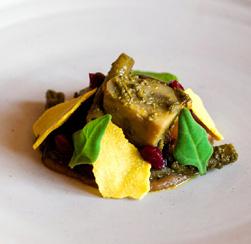

Besides Matt, MasterChef Australia Executive producer Tim Toni, Herald Sun food writer Dan Stock, MasterChef video producer Carly Schmidt and some specially invited guests, yours truly also made it to the table to relish some meatless, Indian inspired goodness. The evening couldn’t have panned out any better.
As the name suggests we entered the dimly lit, open plan kitchen via the Raichuras’ laundry into a well-appointed, cosy dining and kitchen. After the introductions we all settled in to wait for Matt to join us. Very soon he filled the tiny doorway with his impressive frame, sporting a relaxed look with ponytail, zip jacket, and sports cap, sans the famous Preston cravat.
He had recently announced his exit from MasterChef’s new season and the private dinner was just prior to the announcement of the new judges so curiosity was high among those not in the know. There was much speculation with Matt sharing, with me, his thoughts on who could be the best judge but the MasterChef producers were smiling and tight lipped.
Between all the guests, ranging from celebrities to doctors to a prison administrator, the environment was conducive to some really good across-thetable banter, a fair bit of it around food. Talk and taste were on the agenda with no conversation-stifling distractions like loud blaring music. The assembly of brilliant and influential figures from the cooking and entertainment world provided an invigorating boost to the dining experience.
(One such memorable story from the night: Matt’s recount of how Akshay Kumar would arrive at work on MasterChef India via helicopter, in order to avoid rush-hour traffic).
Braving the most variable weather time in
Melbourne, Helly’s kitchen, at that time, was getting equipped to launch its new spring menu. Helly’s choice of dishes were the result of fine-tuned intuition and creative courage. As the courses were introduced, one was impressed by the diversity of her menu, where elite elements were gathered from different regions of India to pair with Australian indigenous ingredients.
Quite a bit of attentive labour went into the presentation, taking things off to a fine footing. Bringing out nearly 100 portions of food on the table over three and half hours is never easy but Helly Raichura was on top of the game and brought both flair and technique to the menu.
Like an artist showcasing their creativity on each plate, she sent out each course, and you knew that at the core of each good looking
plate lay her love for taking the mundane to masterful.

My personal favourite was the Shikhampuri Kebab with melt-in-yourmouth magic made of jack fruit, dahl, mint, coriander and finger lime. The Gucchi Pulao made with morels, aged basmati rice and Sandalwood nuts served with roasted garlic raita came a close second.
An honourable mention is a must for the Khandvi, cooked with besan, coconut, native basil and bush tomatoes, perfectly balanced with the nuanced heat of warm spices. The painstakingly created tender pasta like folds disappeared in my impatient mouth within seconds.

The Matla Undhiyo was another surprise, as the Gujaratis in the house would agree. It was nothing like the traditional Undhiyo I
had eaten before. Helly had created hers with seasonal vegetables, paper bark, Davidson plums, onion jam and greens. The saltiness with tang, topped with spices, generated as much curiosity as the wattle seed Khichiya Pappads with finger lime, that were served at the beginning.
Every dish was a small explosion of taste that went down well teamed with the BYO wine and champers. Between conversations the guests paused for a little reflection on each menu item, discussed its merits before moving on to the next sensation.
Helly elevated the experience by inviting us to ask questions and provide feedback on her dishes. She also briefly and a tad nervously explained the inspiration behind the dishes as they came out.
For dessert, the white asparagus, cantaloupe, lemon myrtle and Geraldton wax dish hit my bliss point. I seriously wanted to lick my plate.
Having learnt some tips and tricks from culinary royalty like Gaggan Anand and Shaun Quade, Helly firmly believes sumptuous cooking goes hand in hand with aesthetics. What’s more important we ask her – beautiful food or delicious food? She replied, “Food that looks and smells good should surely taste good.”

We simply had to agree when she presented the dessert with a flourish, a box of sweets. The prettily packed Sandesh (Peach, Strawberry Gum and Rose) and Chiroti (Geraldton Wax, Native Flowers, Riberries) hit the right notes after that wonderful main course. All if it was then washed down nicely with some freshly brewed River Mint Tea.
The dinner ended but the conversations continued to flow, followed by a feel good memory photo session with the exalted guests. This was Matt’s second visit to Helly’s vegetarian kitchen, tying in quite well with his love of plant-based meals. He loves veggies because “they have more of everything; more texture, more flavour, more colours and more joy.” We have no doubts that Helly Raichura agrees.
NOVEMBER (2) 2019 27 NATIONAL EDITION
Gucci Pulao
Cantaloupe dessert
Chena Peda
Matla Undhiyo
Khandvi
Gorillas in the Mist
Studying one of the world’s most endangered species up close, in Rwanda
BY SANDIP HOR

As the rising sun begins to colour the savannah grasslands of the Akagera National Park in Rwanda, we spot a herd of antelopes grazing under acacia trees, perhaps thinking how to survive another day without being the prey for a lion or a leopard.
This expansive sanctuary - often referred as Rwanda’s Serengeti - is another home to Africa’s Big Five, which besides the two carnivores includes rhinos, elephants and buffaloes.
We later locate several buffalos and elephants plus zebras, giraffes, hyenas and hippos, unfortunately not lucky enough to trace the rhinos and the predators. This doesn’t disappoint me too much, because I am in Rwanda chiefly to see the mountain gorillas - one of the world’s most endangered species - in their own wild habitat, chasing other wildlife coming in as a bonus.
Gorillas are Rwanda’s key attraction.


One third of the planet’s last lot of mountain gorilla population, currently just over 1000, hide in their Volcanoes National Park, located at the foothills of a chain of volcanic mountains in the northeastern part of the country. The rest lives in neighbouring Uganda and Congo. A few decades back, they were nearing extinction due to illness and poaching. The species has survived thanks to the great efforts of animal lovers like American Dian Fossey, who spent most of her life in Rwanda working with these mysterious animals. She was sadly murdered in Rwanda in
1985 but her good work still keeps going through the Dian Fossey Gorilla Fund. (To know more about her life and work,check out the well-known Hollywood film Gorillas in the Mist.)
Slogging through the mist-engulfed thick jungle to spot the gorillas, who tend to live in big groups comprising of males (called silverbacks because of the silver lining in their backside), females as well as juveniles, can be described as a life changing experience; particularly when watching their daily routine from close proximity. They are pretty harmless and used to seeing humans, but still the rangers insist on a 7m distance from them.
Currently there are 12 groups which are habituated to humans and can be visited.
Each group is made up of some 15 to 20 members. At the park's headquarters in Kinigi, a small town near the volcanic mountains, trekking permits for only eight visitors per group are issued each day.
Time allowed with the gorillas is limited
to just one hour, to minimise human interaction, the spreading of infections and undue stress on this endangered species.
The permits are nor cheap, costing US$ 1500 per person but anyone who has embarked on this will possibly say every dollar spent is worth this once-in-a-lifetime experience.
The physically demanding trek can vary from at least one to up to eight hours depending on the group’s location within the vast sanctuary. Luck favours us as we find ours - the Sabyinyo group, one of the park’s oldest - after labouring for an hour and a half.
I am enthralled from the very first sight: the world’s largest primates, around 15 of them, in an open area doing all sorts of humanly things in front of usrolling, jumping, somersaulting, eating bamboo stems, making faces, scratching, even fighting. Nothing unusual for such behaviour as they share 98% of their DNA with us. Resembling the fabled King Kong,
a large 6-foot male sits atop a rock, keeping an eye on everything around. Our guide tells us he is 47-year-old Guhonda, the head of the group and possibly the oldest gorilla in Rwanda.
Besides gorillas, the other thing that people associate with Rwanda is the brutal genocide of 1994 in which some million people were killed in just 100 days.
However for 12 million Rwandans today it’s the past from which they have moved on to make their nation one of the most progressive in the continent. Today they don’t talk about their individual ethnicity, all proudly proclaiming themselves as Rwandans. There are other things that are capturing the nation’s interest domestically, such as the government’s unique initiatives like banning plastic bags, using drones for essential medical supply and hosting a major conservation-focussed festival, the KwitaIzina, to name baby gorillas born during the year.
Among all the initiatives, what strikes me as most impressive is Umuganda, a community event held every last Saturday of the month when all Rwandans above the age of 15 are voluntarily encouraged to get involved with some social welfare and public works. According to a local, this program brings the community together, increases social cohesion, saves some government funding and inspires all to work towards a common agenda. I wish this inspirational initiative can be adopted in other countries too.
The results from the good work of the government and the people are noticeable throughout Rwanda, which is a very welcoming and safe destination for travellers. The urban quarters are clean and green, in particular capital Kigali which with its enchanting mix of new and old, captivates visitors.

28 NOVEMBER (2) 2019 www.indianlink.com.au TRAVEL
Rwandan capital Kigali
TRAVEL NOTEBOOK
Getting there: Star Alliance member Ethiopian Airlines (www. ethiopianairlines.com) have flights from Singapore to Kigali via Addis Abba.
Accommodation: There are several hotels of international standard throughout Rwanda; in Kigali the plush Serena Hotel (www. serenahotels.com) is a good choice.

Visa: For all nationalities, 30-day visa on arrival in Kigali is available upon payment of US$ 30.



Currency: Rwandan Franc US$1U = 900 RWF.


Language: English and French are widely spoken in addition to local dialects.


NOVEMBER (2) 2019 29 NATIONAL EDITION
Time allowed with the gorillas is limited to just one hour, to minimise human interaction, the spreading of infections and undue stress on this endangered species.
THE TEAM








































































30 NOVEMBER (2) 2019 www.indianlink.com.au Wespendourtime tellingyourstories
Carl Buhariwala
Preeti Jabbal Devna Luthra Vinaya Rai Kashif
Usha Ramanujam Arvind Mohan Dhall Darshak Mehta Emie Roy Rani Jahla Sagar Mehtrotra Dipanjali Rao Mohan Thite Sai Narayan Sandeep Hor Kira SpucysTahar Nikita Kulkarni Gaurav Masand Kalyani Wakhare Pawan Luthra Jyoti Shankar Priyanka Tater Astha Singh Sukrit Sabhlok Uttam Mukherjee Farzana Ahmad Rajni Anand Luthra Puneet Anand Anup Kumar Sunila Vig Deepa Gopinath Tarini Puri Royston Rebello Raweena Raval Nisha Joseph Hamida Parkar Saroja Srinivasan Shafeen Mustaq Dinesh Raka Sarkhel Komal Utsav Jagad Vish Chilumkurti Sahibnoor Singh Auntyji Yesha Joshi Petra O’Neill Neelam Vasudevan Saroni Roy Avi Chandiok Niraj Pandya Anubhuti Madan Singh Radhika Bhatia Simren Samrai Ritam Mitra Charuta Joshi Beheshta Wasseh Frankey Gerard Fernandes Sydney Srinivas Mital Parekh Dilip Jadeja Dhanya Samuel Virat Nehru Sukesh Thapliyal Neha Malude LP Ayer Nanditha Suresh Aparna Ananthuni Aneeta Menon Sudarshan Arvind
Grahak Cunningham Minnal Khona
Harrison


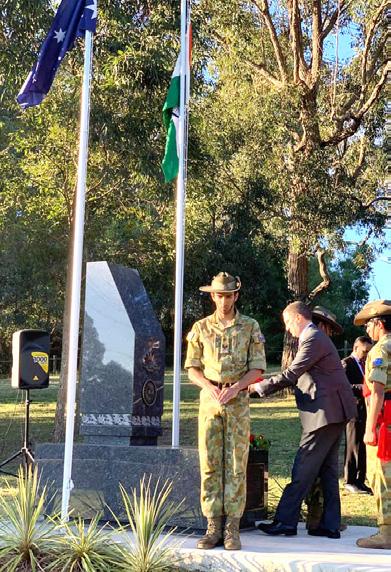
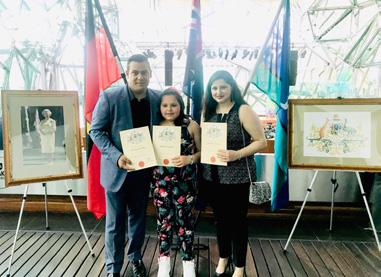


NOVEMBER (2) 2019 31 NATIONAL EDITION Send your event snaps or party pics to media@indianlink.com.au PEOPLE, PLACES, PARTIES THIS MONTH
Welcome Baby Ramaa, first born to Apurv Kasoorkar and Sarita Kadukar
The Bhandari family (Abhinav, Diksha and Aleah) become Australian citizens
Halloween Hungama: Kashif Harrison; Rainaa Kalia and Aleah Bhandari; Arianna Tater
Make up Bianca Sergi | Pic Studio Hudson
Julian Leeser MP joins Remembrance Day commemorations at the ANZAC Jawan Cenotaph in Cherrybrook NSW
cineTALK


first date. She feels short-changed because he had cropped his mug smartly enough to hide his baldness in his profile pic. He is none too pleased that overweight people get away without posting full-frame snapshots.
HUMOUR HITS A BALD PATCH
After their first date, although Apsara and Chaman have decided to call it quits, fate serves a spin. They will invariably meet again. Worse, their parents have convinced themselves that the two are in love. A tighter build-up to the climax would have helped, considering the ending is predictable. Danish Singh's screenplay and dialogues, and Mitesh Soni's editing, demanded sharper execution.
UJDA CHAMAN
STARRING: Sunny Singh, Maanvi Gagroo, Aishwarya Sakhuja
DIRECTOR: Abhishek Pathak
HH

All that glitters is not gold, not certainly a shiny balding pate in the marriage market. Thus realises the film's 30-year-old virgin hero, early on in the film.
He is an unassuming Hindi lecturer at Hansraj College, and the friendly neighbourhood misfit among the loud, spirited Punjabi populace of Delhi's Rajouri Garden. Students shout “takla”, girls snub his arranged marriage bids, the family astrologer
warns he just might die a celibate, and his father is egging him to join Tinder.
Ujda Chaman starts off on that rather unusual note for a mainstream Bollywood comedy, introducing its plot and protagonist with slice-of-life quirk.

If well begun is half done, Abhishek Pathak's debut directorial feature had that advantage. The problem is the film remains half done. After starting off on a breezy note and managing to establish its intention, the narrative shows no signs of tapping the full potential of an interesting subject. Worse, the film loses focus midway.
Before anything, the effort does not necessarily come across as



flippant – one that is simply meant to laugh at baldness. Ujda Chaman does unfold an expected gag bag of baldy jokes, but the film also uses its basic premise to make a point or two about self-esteem and confidence.
Importantly, the film tries to underline why one must realise that beauty lies in the mindset of the beholder, not necessarily the eyes.
That last bit comes alive through the story of Chaman Kohli (Sunny Singh), our balding hero, and Apsara Batra (Maanvi Gagroo), a rather overweight girl he ‘meets' on a dating app. Far from love at first sight, the two are thinking of ways to escape from each other minutes into their
The film's Dilliwaala spirit is credibly set up, primarily through the cinematography of Sudhir K. Chaudhary, and its cast. Sunny Singh, in his first solo role, has to contend with a character that clearly needed to be crafted with wit. He struggles to balance Chaman's frustrations and gullibility.
Maanvi Gagroo essays her role with understated screen presence, leaving adequate impression as Apsara. Aishwarya Sakhuja, Sharib Hashmi and Karishma Sharma have limited footage but manage to make a mark. Atul Kumar and Grusha Kapoor as Chaman's parents get comic scenes that range from funny to stereotypical. Saurabh Shukla is hilarious in a cameo.
The film benefits from a foottapping soundtrack (Guru Randhawa and Gourav-Roshin) but the loud background score to underline its comedy quotient robs the fun factor.
Vinayak Chakravorty
32 NOVEMBER (2) 2019 www.indianlink.com.au
ENTERTAINMENT
INDIAN LINK SOCIAL MEDIA
her otherwise ordinary life – from the mediocre girl in school and the mediocre woman as a grown-up, to someone everyone is crazy about. So, how can she let go of her beautiful existence by being married to a bald man, she haplessly asks Bala.
Gentle psychological probing as these make the characters more believable, in turn ensuring the film is much more than just a laugh riot about wigs coming off at the wrong place and time, or hero and heroine recording hilarious TikTok videos on cheesy romantic tunes of the nineties.
BALD IS GOLD FOR AYUSHMANN
Bala, in every sense, is a rare Bollywood film that can be credited as a writer's triumph first and foremost, for the way it manages to retain contextual depth despite never losing out on humour. Few comedies in commercial Bollywood have tried doing so in recent years - the Munna Bhai films come to mind as random recall.

Amar Kaushik, the man who shot to fame directing the horror comedy Stree last year, tackles a very different genre of humour here. The issue-based, feelgood comedy, set in a smalltown, has become staple fare in Bollywood lately, and each new release in the genre faces the challenge of reinvention.
Kaushik's brilliance lies in his natural storytelling, which makes Bala instantly likeable. The film's dialogues are an asset, in this context.
A big part of the paisa vasool deal about the film is watching Ayushmann Khurrana act, not just as the protagonist, but also as Shah Rukh Khan, Amitabh Bachchan, Dev Anand and Sunny Deol – Bala after all is a wannabe stand-up comedian on the side, with a fetish for mimicking top Bollywood stars.
BALA
STARRING: Ayushmann Khurrana, Yami Gautam, Bhumi Pednekar
DIRECTOR: Amar Kaushik
HHHH
Bollywood's Mr Disruptor is at it again, rewriting the rules of what the Hindi mainstream hero can dare to do on screen.
Only a couple of months ago, Ayushmann Khurrana was Dream Girl, the phone ‘sexpert' who aces in impersonating a woman's voice, and makes a living fulfilling fantasies of lonely men. Now, he returns as Bala, a 25-year-old whose rapidly receding hairline sets off confidence issues, because he is constantly fending against rejection in a world that openly discriminates against physical flaws.
Before that brief synopsis gives you a sense of deja vu because you've seen Ujda Chaman only last week, Bala is a far more accomplished effort. Also, though there is thematic likeness, comparisons would seem unnecessary between the two films because they narrate slightly different tales, owing to
the different backdrops the stories are set in.
Importantly, Bala has the Ayushmann advantage, evidently the best thing a filmmaker can hope to work with – creatively as well as commercially – right now in Bollywood.
Watching Ayushmann go as protagonist Bal Mukund Shukla – Bala to friends and family – you understand why casting the actor has been an advantage lately. He has managed to elevate his brand value to that of a star, because the audience flocks to see him. Yet, his characters are rooted in reality, letting writers and directors capitalise on his slant at experimentation.
Niren Bhatt's script however, is not solely about Ayushmann or Bala. There is a fascinating tri-faceted reflection of the human perception about looking good. If, on the one hand, Bala is tormented because he is losing out in personal and professional life owing to loss of hair, his neighbour Latika (Bhumi Pednekar) is used to another pertinent aspect of body-shaming since childhood. She is the dark-skinned girl
in small-town Kanpur, who is bright enough to carve her professional space as a lawyer, but not bright enough in complexion to interest the neighbourhood cool dude Bala through their growing-up years.
Cut to present times and, desperate for a solution, Bala finally settles for a wig. Life takes an upward swing as, almost coincidentally around the same time, he meets Pari (Yami Gautam), the third angle in this story. She is a pretty TikTok star, signed up to sell fairness cream by the Ayurvedic cosmetics firm where Bala works.
Bala, Latika and Pari represent three ways to look at physical imperfections in life. You could be Bala, and suffer from complexes, till you get the crutch of a wig to gain confidence. You could be Latika who, despite her dark complexion, battles to face every societal scorn with her chin up.
Or, you could be Pari, whose logic for being obsessed with beauty must rank among the most original ones in Hindi mainstream ever: beauty, for Pari, is not a badge of vanity. Rather, it is a support system that elevates
Mimicry in fact is a big attraction all through. In a hilarious situation, Ayushmann as Bala is venting frustration with his two close friends, Bachchan bhaiya (Javed Jaffrey) and Ramu the neighbourhood hairdresser (Abhishek Banerjee). Slightly sozzled, they speak in Amitabh Bachchan style, executing the words with Amitabh Bachchan swagger. The scene is a tribute to an evergreen legend by three very talented artistes of our times, a standout moment in every sense.
Bhumi and Yami are perfectly cast in roles that accord importance to the heroines, though Bhumi's blackened make-up to make her appear darkskinned looks unconvincing.
Overall, Bala is a winner all the way for Ayushmann. This is the actor's 13th release in Bollywood, ever since he made his debut with 2012's Vicky Donor. That makes the film a very lucky 13 for the actor. Coming after six consecutive hits over the recent past, this film is guaranteed to complete a Super Seven run for Ayushmann at the box-office.
Vinayak Chakravorty
NOVEMBER (2) 2019 33 NATIONAL EDITION ENTERTAINMENT
The BUZZ
U P-TO-DATE NEWS ON WHAT’S HOT AND HAPPENING IN BOLLYWOOD
AYUSHMANN BHAVA!
It’s been a 7-year journey of relentless success and stardom for Ayushmann Khurrana. And that is the number of back-to-back hits he has churned out over the past two years. Bala, his new release has registered his career’s best opening-day haul of Rs 10.15 crore, eclipsing the Rs 10.05-crore day one collection of his last release, Dream Girl. Incidentally, Bala is his 13th film in Bollywood since he started off with Vicky Donor in 2012 and, in the likely scenario that the film will see profits, Ayushmann will have an enviable track record of nine hits out of 13 releases.

For an actor who started out as the master of offbeat roles and a poster boy of unconventional films, Ayushmann Khurrana has emerged as Bollywood's most unconventional hit machine.
With his blend of good looks, abundant acting skills and singing talent, Ayushmann isn't exactly the sort of actor you can keep down for long. The actor who started his journey on the small screen soon understood that, with changing times and tastes, the winning trick lay in being part of stories about flaws and imperfections, and in essaying men who strugglewith issues of all kinds. Ayushmann loves the thrill of taking risks with such roles, he tells you, and, if anything, delivering back-to-back hits
only increases that thrill.
Over the past two years, he has struck gold with experimental subjects such as Bareilly Ki Barfi (2017), Shubh Mangal Saavdhan (2017), Andha Dhun (2018), Badhaai Ho (2018), Article 15 (2019), Dream Girl (2019) and now Bala.
"He’s got a hit formula - he takes up subjects which are taboo or are brushed under the carpet, and tells these stories in a neat and clean manner, laced with humour. So while there’s entertainment, the films also give a message," trade expert Girish Johar feels.
According to trade expert Rajesh Thadani, Ayushmann's "common man" appeal makes him a star. "His boy-nextdoor image has worked for him," Thadani feels. "The expectation from him is sky high now. He has to pick and choose very carefully.”
To this, Johar adds, "As a fan, I would want him to do something different other than the films dealing with taboo topics, through which he can increase his fan base and stay strong at the box office."
But Ayushmann's love for offbeat cinema looks set to continue: he will next be seen with megastar Amitabh Bachchan in Shoojit Sircar's Gulabo Sitabo, and then address the issue of homosexuality in Shubh Mangal Zyada Saavdhan.
HOUSE ARREST FOR JIM SARBH
No, he’s not in trouble, even though we know Jim Sarbh has played the baddie more than once on screen.
House Arrest is the name of his new release. The Netflix show is about a sensible-guy protagonist, who is buffeted by a bunch of insane people. “The more the guy tries to hold everything together, the more everything around him falls apart, because everyone around him seems insane,” Jim said about his new show.
“We got to bring a bit of our insane energy to the picture, which was fun," he added.
Ali Fazal, Shriya Pilgaonkar and Barkha Singh also feature in the film, which streams on Netflix from 15 November.
In three short years, the 32-year-old has left the audience spellbound with his performances in Neerja, Padmaavat, Sanju as well as in numerous web shows.
Jim says the Netflix tag attracted him to the film. “I wanted to work with Netflix. Also, I wanted to do comedy. I haven't got a chance to do comedy in films so far. And, I loved the script,” he explained, adding, “Platforms like Netflix give a nice space to reach more people and tell different kinds of stories that otherwise would not be told in the mainstream - be it Hollywood or Bollywood. These platforms allow alternative storytelling, which is my zone.”
MORE HOUSE ARRESTS
The person under house arrest in House Arrest, is not Jim Sarbh, but Ali Fazal.
Ali is Karan, a man who has not stepped out of his flat for nine months. “He is not trapped. He is not psycho or a murderer,” Ali revealed. “It's a voluntary house arrest and there are interesting reasons behind this, which is what the film is all about. There is not one specific reason, he has just had enough of a lot of things. The film is an out and out comedy."
Given the story idea, as also the fact that the humour required the protagonist to be caught inside his own home with lots ofother people, Ali recalled the shooting experience was “claustrophobic”.
"There were 60 to 70 people inside one flat,” Ali said. “We shot at the same location for 25 days. We thought it would be easy but actually it wasn't. Every third night, we used to step out and chill after the shoot.”
Sounds more and more intriguing!
Ali has lately also been busy in Hollywood, shooting for Kenneth Branagh's new HerculePoirot project, Death On The Nile. The film stars Branagh as Poirot and is toplined by Wonder Woman actress Gal Gadot. Also featuring in the ensemble cast are Tom Bateman, Annette Bening, Russell Brand,
Armie Hammer, Sophie Okonedo and Letitia Wright.
GAY GUY MEETS A LESBIAN WOMAN…
… and there’s a typical Bollywood ending. No, we don’t know that to be true! What we do know, is that it’s an unusual theme for Zareen Khan and Anshuman Jha's next release Hum Bhi Akele, Tum Bhi Akele. A mainstream Bollywood film, it has a gay man and a lesbian woman leading the narrative. The Harish Vyas directorial will premiere at the upcoming South Asian International Film Festival at Manhattan.
The film, which was also one of the ten selected scripts from Asia at the South Asian Film Market (SAFM) in Singapore in November 2018, is scheduled for a Valentine's Day 2020 release in India.
On hearing about the premiere, both leads Zareen and Anshuman shared their excitement.
“I'm feeling on top of the world that we will be premiering in New York. It’s a film that is very close to my heart and I'm really very excited,” said Zareen.
Anshuman said “This film discovers and re-discovers the love in friendship. And which better city than the Big Appleto premiere such a theme!”
WHEN AKSHAY AND SAMLAN MAKE MUSIC
There are barely any stunts which the Khiladi can’t do himself, and now adding to his list is a music-video debut with Filhall. Kriti Sanon's sister Nupur stars alongside Akshay Kumar.
The soulful number is sung by B praak, with lyrics by Jaani. Directed by Arvindr Khaira, the song depicts the story of that true love which is pious, selfless yet incomplete.
Akshay’s character, a doctor, comes across his old love who has met with an accident. He takes the audience back in time to the days when they met, fell in

34 NOVEMBER (2) 2019 www.indianlink.com.au
ENTERTAINMENT
JIM
AKSHAY KUMAR
love and separated. With over 14 million views in less than 24 hours, the video has got a huge thumbs up from industry colleagues.
Meanwhile, superstar Salman Khan has gone behind the microphone to sing a song again, this time for his upcoming film Dabangg 3 along with Payal Dev.
Salman’s first song came for his 1999 film Hello Brother, and has since recorded songs for films such as Kick and Hero. For this latest number Yu Karke, which Payal describes as a “fun peppy dance number”, the music isset by Sajid-Wajid, who have scored music for the other various Salman-starrers including Dabangg 2 and Partner. Dabangg 3, directed by Prabhu Deva, is slated to release on 20 December.


ON CHILD LABOUR AND TRAFFICKING
Although filmmaker Brahmanand S. Siingh's upcoming feature Jhalki is shown from the perspective of a child, it is not a children’s film.
Instead, it’s a reality many children suffer. “Our protagonist is a nine-year-old girl named Jhalki, and we, as audience, see the world through her eyes,” said the filmmaker, about the film that features two young actors, Aarti and Goraksha, along with Boman Irani, Sanjay Suri, Divya Dutta, Tannishtha Chatterjee and Govind Namdev.
The film shows how a little girl fights for her young brother who is a victim of
WHO WORE IT BETTER?
KATRINA KAIF OR CANDICE SWANEPOEL


IN NAEEM KHAN?

+ Share your views with us on our Facebook page /IndianLinkAustralia
human trafficking and child labour.
Siingh says the story alters the gender narrative in Bollywood.
“In the film, the sister is in search of her brother to protect him from the dangers of child labour and trafficking. From childhood, boys are told to protect girls and that is their prime responsibility, because girls are weaker. Jhalki proves this wrong," he revealed.
The poster of the film was released at Cannes Film Festival earlier this year, followed by screening at various film festivals including New York Indian Film Festival, the Boston International Film Festival and the Singapore South Asian International Film Festival.
Asked about the response of the global audience, Siingh said, "It is a global issue and the story is universal. Any poverty-stricken society faces this issue. That is why, at every film festival we have shown the film, the audience has found it relatable."

The film will release on 14 November (on what is Children’s Day in India), in theatres as well as on the mobile digital movie theatre platform Picture Time, for a wider access in rural India.
RANVEER DOES KAPIL DOING THE NATRAJ

It’s called the ‘Natraj Shot’.
The one-legged hook shot became an iconic image for former Indian cricket captain Kapil Dev, especially as he used it to take India to a glorious World Cup
Pics: Pinkvilla, Stylish Starlets
victory in 1983.
Ranveer Singh has done an appropriate enough rendition of it in the upcoming ’83, in which he plays Kapil Dev.
The legend himself seems satisfied with it, tweeting “Hats off Ranveer” in reply to the actor’s post of his own version of it.
Kapil used the shot with significant prowess on 18 June 1983 when he scored a game-changing 175 not out against Zimbabwe at Tunbridge Wells, England. India were struggling at 17 for five wickets in the match at one point, and went on to win by 31 runs thanks to Kapil's splendid knock.
Directed by Kabir Khan, '83 aims to capture the story behind India's historical 1983 Cricket World Cup win.
The film is scheduled to release on 10 April, 2020.
ON TWITTER THIS WEEK
Match the following stars to the tweet that appear below.
SRK, Ranveer Singh, Salman Khan Dabangg 3 ka naya gaana, 'Yu Karke', suno humaari yaani ki Chulbul Pandey ki aawaaz mein.
NATRAJ SHOT #RanveerAsKapil.
Over the years I made a good house, Gauri made a good home, but I really believe we are the best at making some really good kids!
For more caption entries, see YOUR SAY Page 09
NOVEMBER (2) 2019 35 NATIONAL EDITION Why are you bowling underarm to me, is this how you play cricket down under? Krishna Sri Congratulations Krishna. You win a movie ticket. CAPTION CONTEST WIN MOVIE TICKETS! What’s Kareena Kapoor Khan saying here? What’s the chitchat between Narendra Modi and Sunny Deol here? Send your response to: media@indianlink.com.au TO WIN A MOVIE TICKET! LAST ISSUE CAPTION CONTEST WINNER
JIM SARBH
SALMAN KHAN
ALI FAZAL
DEAR AUNTYJI
We live in Inner West Sydney in a terrace, and recently, something happened that we really need your rai on and which has all our neighbours up in arms. So we have a large lane which gets a lot of foot traffic, and my husband and I have set up planter boxes with beautiful succulents and plants - and so the whole street looks beautiful. Now my neighbour put out an old planter box, which he neglected and failed to put anything in there. I spoke to him and agreed that we would put in plants - which we did and for the last five years we have maintained that planter box and lovingly tended to it. It makes the street very appealing as you walk down it. So anyway, Gary and his wife moved out this weekend, and they took the planter box with them - to our absolute astonishment. For five whole years, they had not lifted a finger to look after the plants in that planter, and we spent money filling it up with lovely plants. And they took it with them when they moved. My husband and I are baffled why Gary and Susanna would do such a thing. It would have been so heavy to move, and why wouldn't they just leave it - as part of the community. What are your thoughts: are we right to feel upset?
AUNTYJI SAYS
First of all, I thank you sincerely for being such a community-minded person. Sydney needs more people like you and your husband who help shape communities and who contribute by making beautiful surroundings. Now, about Gary and Susanna. Yes. People who have everything, yet feel entitled to take everything that belongs to them. So your neighbours looked at the planter box in terms of something that belonged to them because they bought it, while you and your hubby saw it as part of the environment of your community which made a positive difference to everyone. Gary and Susanna are somewhat selfish, self-centred people who, despite living in the Inner West, did not demonstrate the lefty values of community spirit and social mindedness that the area is renowned for. They seem like insular bastards who take, but don't give back. So where does this leave you? Well, look at this as the opportunity to go find another planter box and lovingly create another item of beauty. Galvanise your neighbours to recoup their loss and start again. At least you all now have a common enemy to refer to, and to use this as a lesson for anyone else who thinks of moving and wants to take community items with them.
DEAR AUNTYJI
I work at a large organisation in Sydney and have a Master’s degree in computer science. I am in IT project delivery and have over 18 years’ experience. I have noticed that my colleagues seem to be getting promotions over me, and I can't see any difference between their work and mine. In fact, the one key difference I see is that they are the trouble makers - the first to challenge management, always asking questions during meetings. I have a different style, I don't challenge management but I always deliver and I get given really good projects and get very good performance reviews. What do I do Auntyji? While I am happy for my colleagues who got promotions, I am wondering where mine is. Your thoughts please?
AUNTYJI SAYS
Hmm. What I am thinking, and which probably has not occurred to you is that you are no longer in school - where if you work really hard and study hard and don't give your teachers a hard time, you will get a good grade. But what worked for us in school, is definitely not going to work for you in the corporate world. Here, you need to work differently. In the first instance, being able to deliver is just part of an equation. If you want to move into management or leadership, you need to demonstrate this. So where is the thinking that shows you are talking and behaving like a manager, or a leader? It would appear to me that you are deferential to managers. The problem is that your managers probably are looking for thought leadership, and they promote others who demonstrate this. While you call your colleagues trouble makers for challenging management, management sees them as people who have good ideas, or who challenge the status quo and who provide thought leadership. So, start by challenging your managers in a professional way - this means ask questions that demonstrate you have wider strategic goals in mind. But choose your language wisely - you don't want to end up a troublemaker.
ASK AUNTYJI Getting ahead at work 1 S T C O NS U L TA T I O N FR E E!! ! C AL L NO W O N 0421 119 628 Our services Include: - Advice and Lodgement on Migrational Pathways - General skills Migration Advice Lodgement - Student Visa Advice and Lodgement - State Sponsored Visa/ ENS/ RMS/ TSS Advice and Lodgement - Business Migration Advice and Lodgement
-
New Zealand Entrepreneur Work Visa now available We also specialise in: Home and commercial Loans (MFAA International Money Transfer
SPEAK WITH US BEFORE ITS TOO LATE! SPEAK WITH US BEFORE ITS TOO LATE!
CMS Int. offers full support with Federal Circuit Court and Federal Court Matters. We now have EFTPOS facilities available! (all credit cards and AMEX)


Syed Mohiuddin Director Ground Floor 57 Macquarie St Parramatta NSW 2150 Mob: 0421 119 628 Ph: +612 8677 5161 syedcompletems@gmail.com syed@completemigrationservicesint.com.au

- Partner and Family Migration Specialist - Admission in Australian Colleges and Universities - AAT Review Procedures in Australia - Immigration changes introduced as of March 2018 - Permanent Skilled changes as of March 2018 - Temporary Skilled Visa Shortage Update CONTACTS: Syed Mohiuddin Director Ground Floor, 57 Macquarie Street Parramatta, NSW 2150 Mob: 0421 119 628, Ph: +612 8677 516 syedcompletems@gmail com syed@completemigrationservicesint.c


1 S T C O N S U L T A T I O N FR E E!! ! C A L L NO W O N 0 413 55 3 14 0 OFFICES Migration Agents Registration Number www.mara.gov.au 1171248
1 S T C ONSU L TA T I O N FRE E !! ! C AL L NO W O N 0 413 5 5 3 14 0 NEW OFFICES Migration Agents Registration Number www.mara.gov.au 1171248
Javid A Igder In-house Solicitor 1. Migration AAT and Court Matters 2. Criminal Cases 3. Family 4. Civil
Adil Mohiuddin Managing Director ound Floor, 57 Macquarie Street arramatta, NSW 2150 ob: 0413 553 140, Ph: +612 8677 5161 il@completemigrationservicesint.com.au






NEW OFFICES
1 S T C ON SU L TA TIO N FREE!! ! C AL L N O W O N 0 413 5 5 3 14 0 NEW OFFICES Migration Agents Registration Number www.mara.gov.au
1 S TC O NSU L T A TI O N FR E E!! ! C AL L NO W O N 0 413 55 3 14 0 NEW OFFICES Migration Agents Registration Number www.mara.gov.au 1171248
Want to work, study & live in Australia or New Zealand? Contact us! We do the hard work for you! Migration Agents Registration Number www.mara.gov.au 1171248
NEW OFFICES
CANADA Permanent residency Contact: Priyanka Ajaykumar Former Employee of Canada Consulate General. 0435 549 106
NEW OFFICES Migration Agents Registration Number www.mara.gov.au 1171248
36 NOVEMBER (2) 2019 www.indianlink.com.au BACKCHAT
Plant thieves DO YOU HAVE A QUESTION FOR AUNTYJI? EMAIL INFO@INDIANLINK.COM.AU Australian Registered Migration Agents and Mortgage Brokers. We help with all your Australian and New Zealand Migration related enquiries.




(2) masterton.com.au or 1300 44 66 37 Jim wouldn’t have it any other way YOUR ULTIMATE INCLUSIONS ‘Everything you’ve ever wanted in your new Masterton Home’
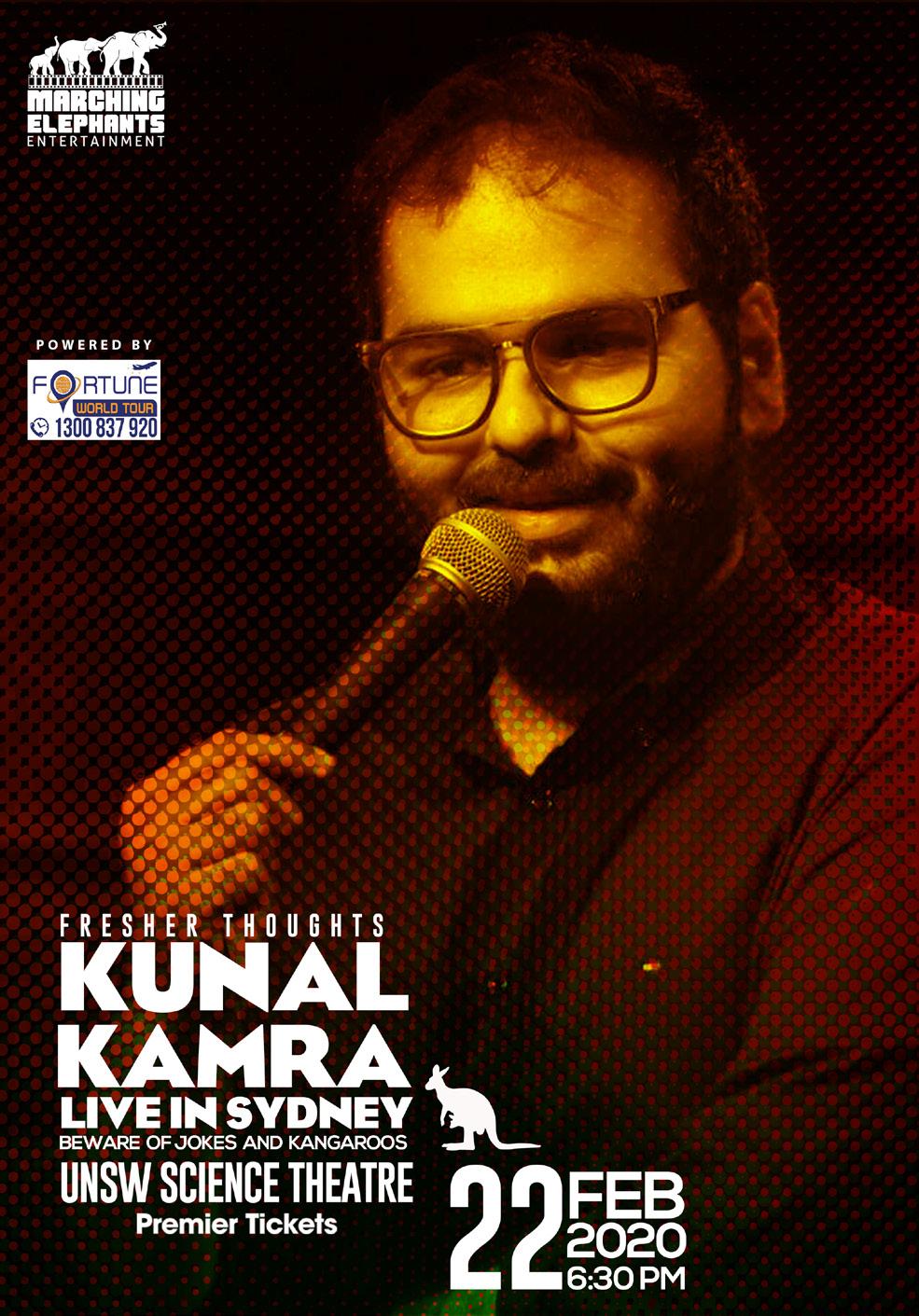
38 NOVEMBER (2) 2019 www.indianlink.com.au

NOVEMBER (2) 2019 39 NATIONAL EDITION













40 NOVEMBER (2) 2019 www.indianlink.com.au Bella Vista Castle Hill Auburn Bankstown Blacktown Campsie 8883 0055 9659 6433 0470 687 768 0477 053 053 9621 7711 9789 2676 Chatswood Eastwood Epping Girraween Gordon Gosford 9411 4564 9874 8801 9869 8002 0469 872 857 0433 422 499 0411 332 209 Hornsby Lidcombe Liverpool Merrylands Newington Parramatta 9987 2248 8034 4635 0431 770 867 0481 752 073 9648 0377 0410 783 260 Pennant Hills Revesby Ryde Strathfield St. Marys 0411 305 516 0451 577 008 0490 088 626 9764 2002 0430 139 138 0424 574 398 Mount Waverley St. Marys Open!


































































 BY MELISSA DOMINGO RAWAT
BY MELISSA DOMINGO RAWAT









 Rajni Anand Luthra
Rajni Anand Luthra











 BY PREETI JABBAL
BY PREETI JABBAL













































































































































